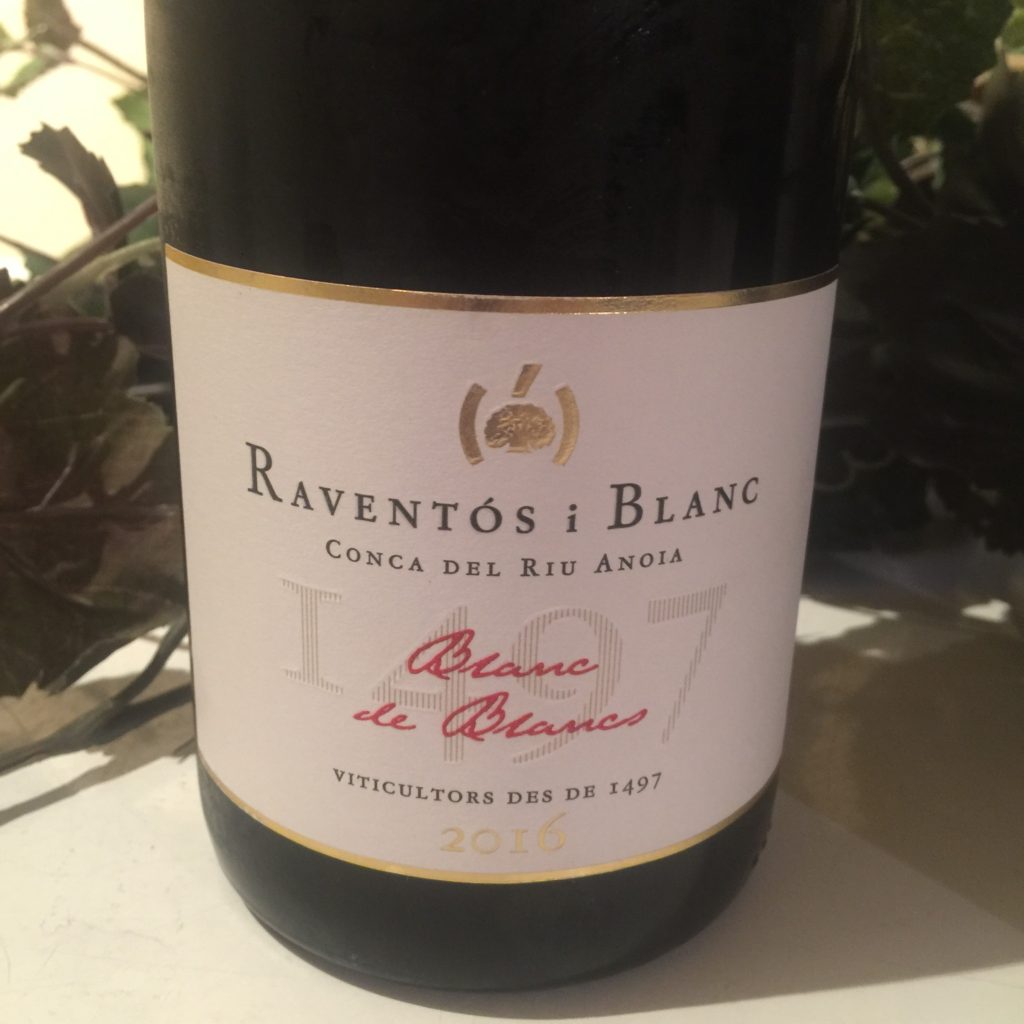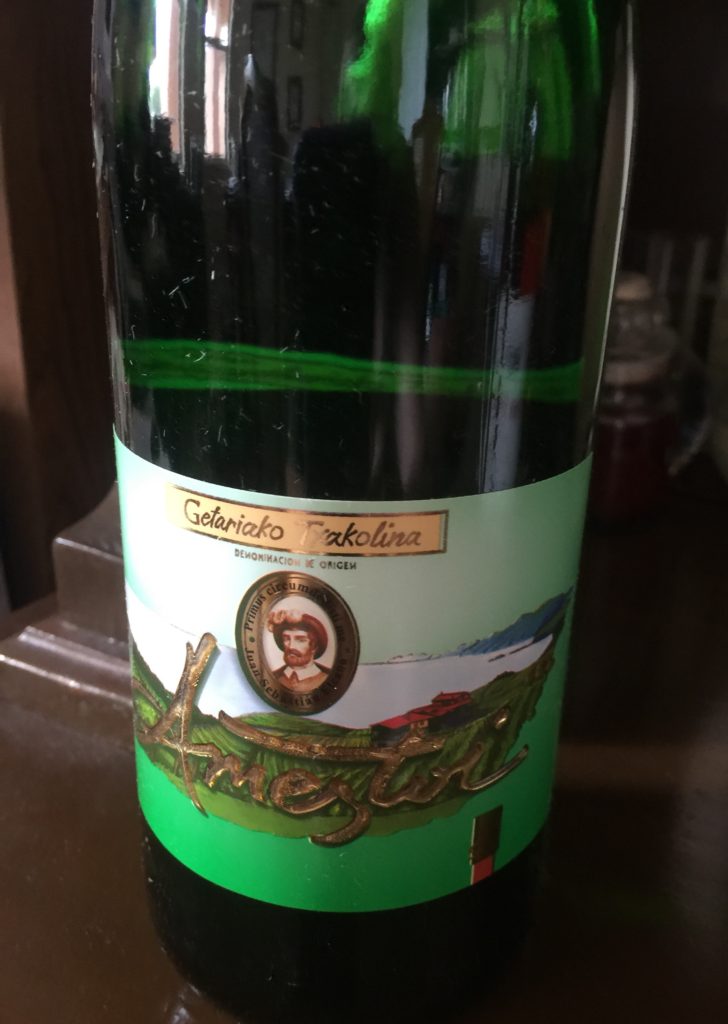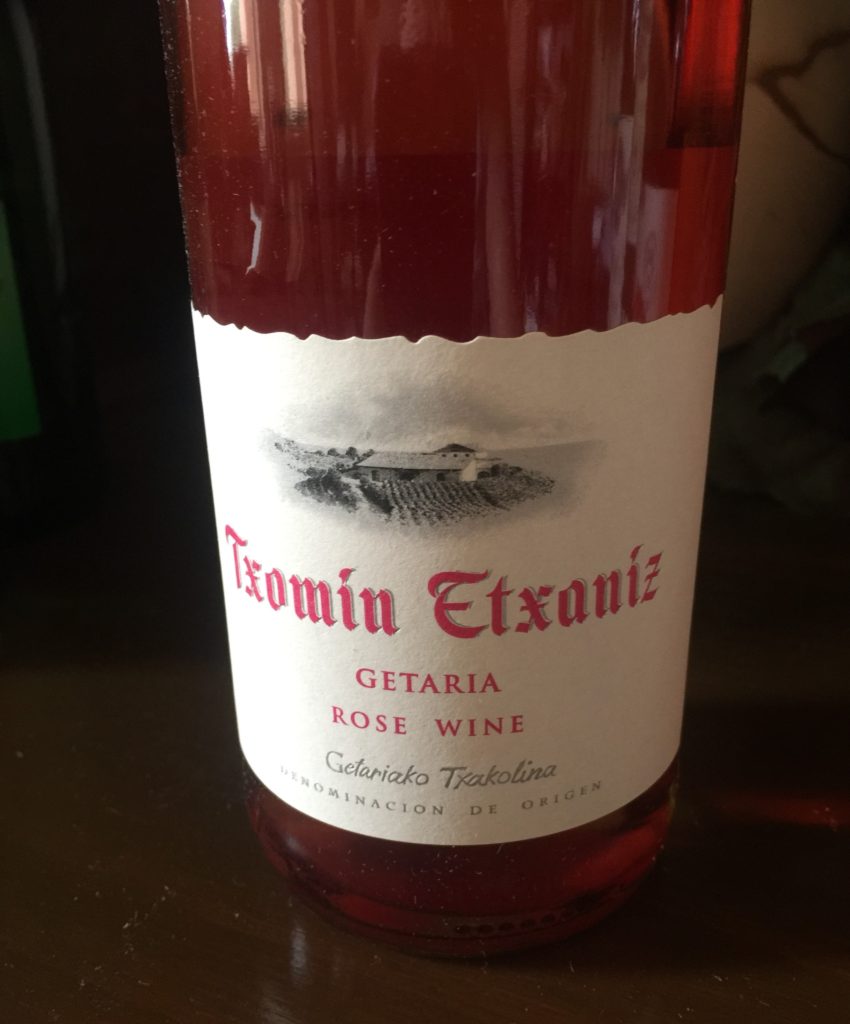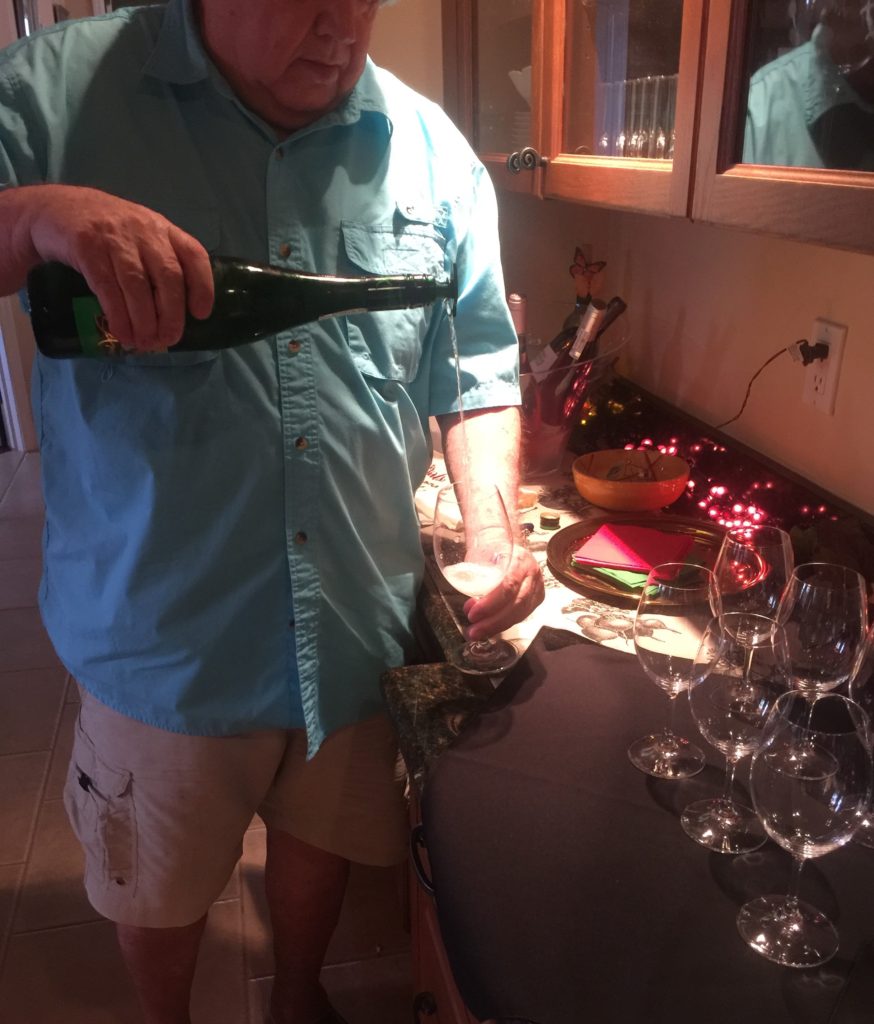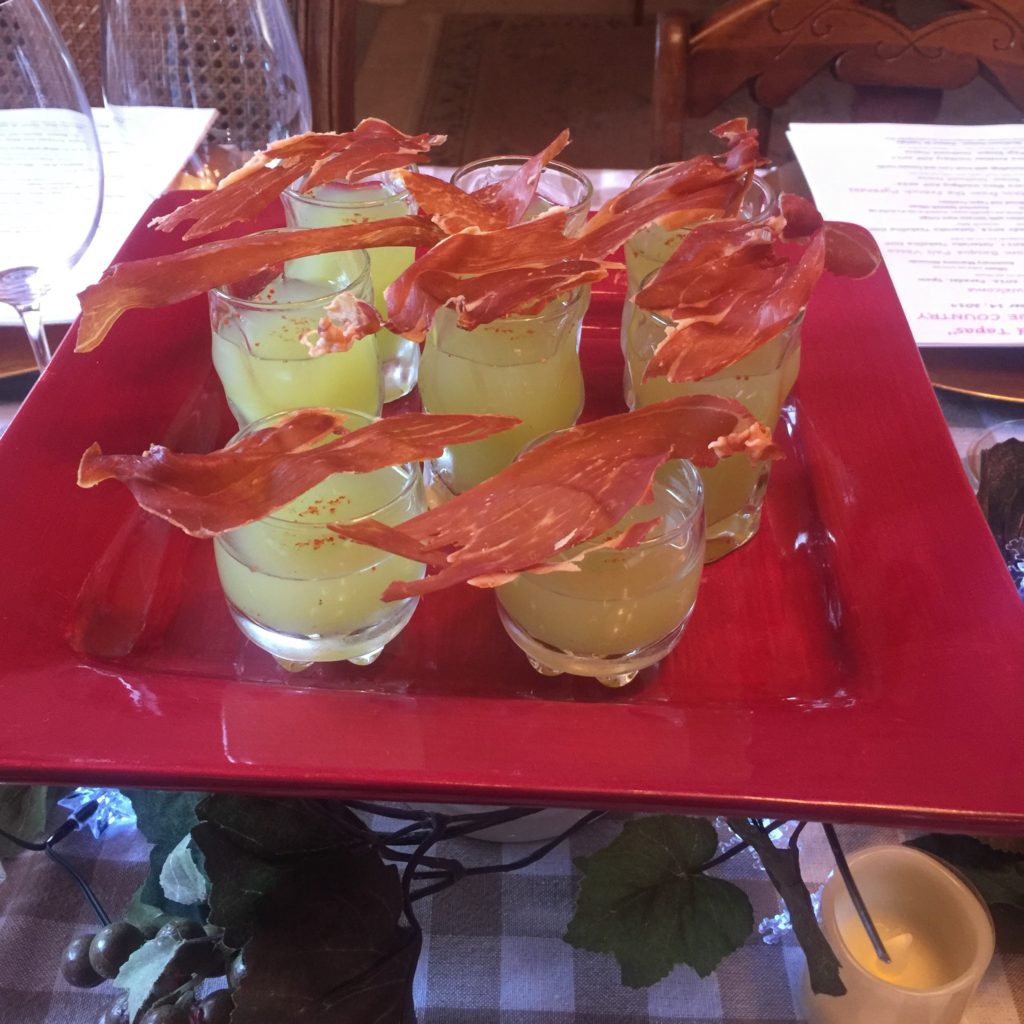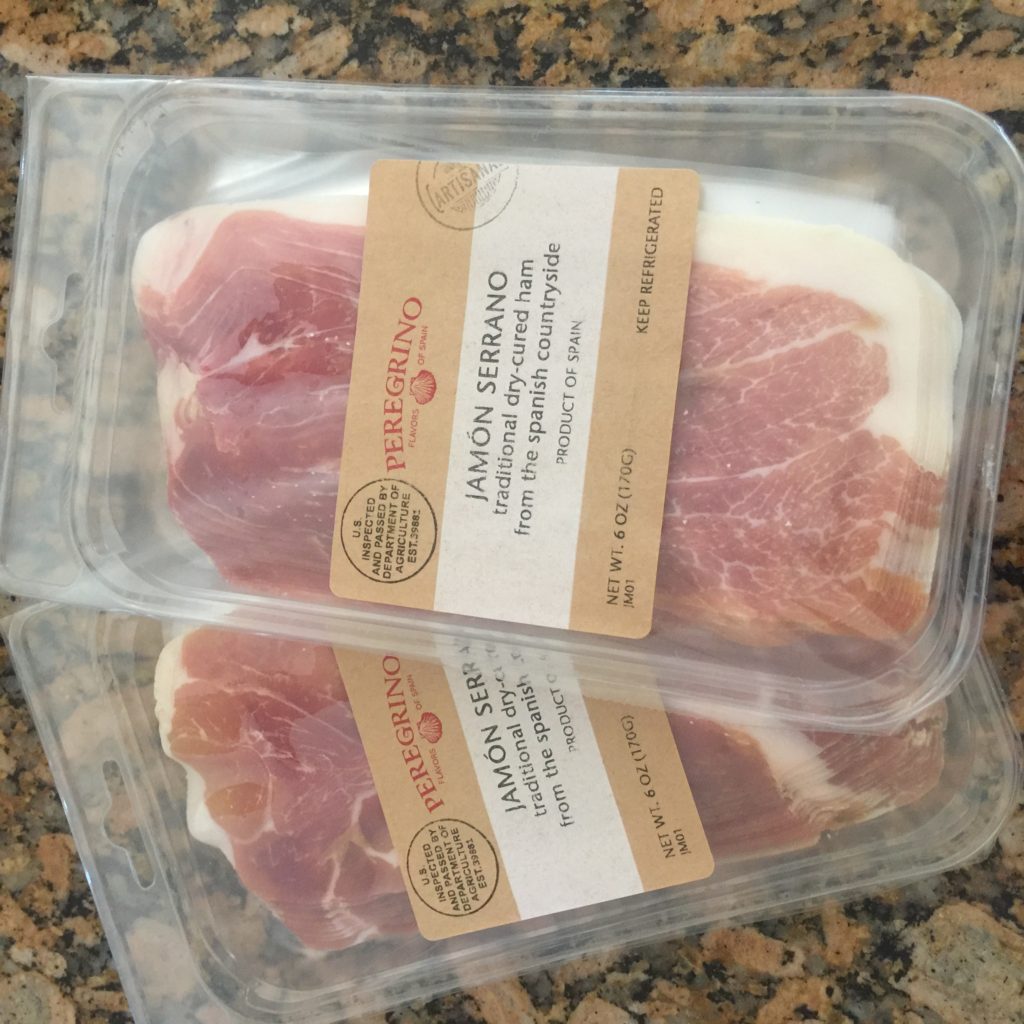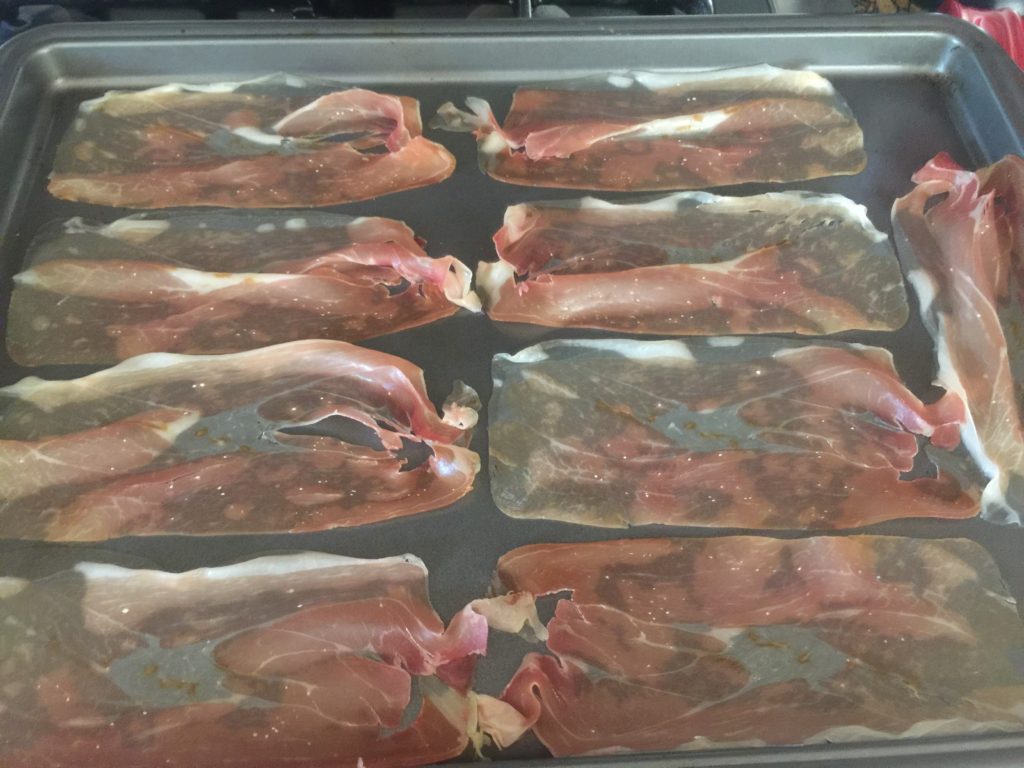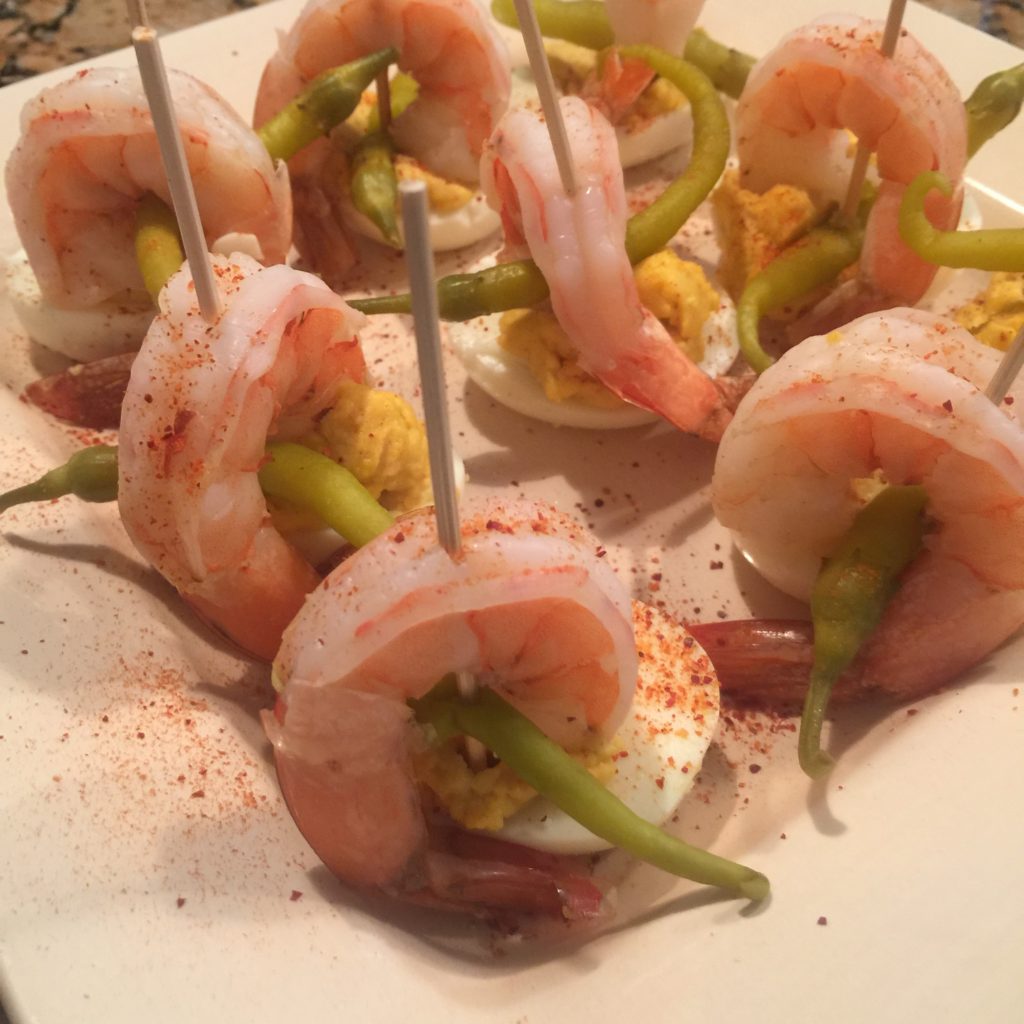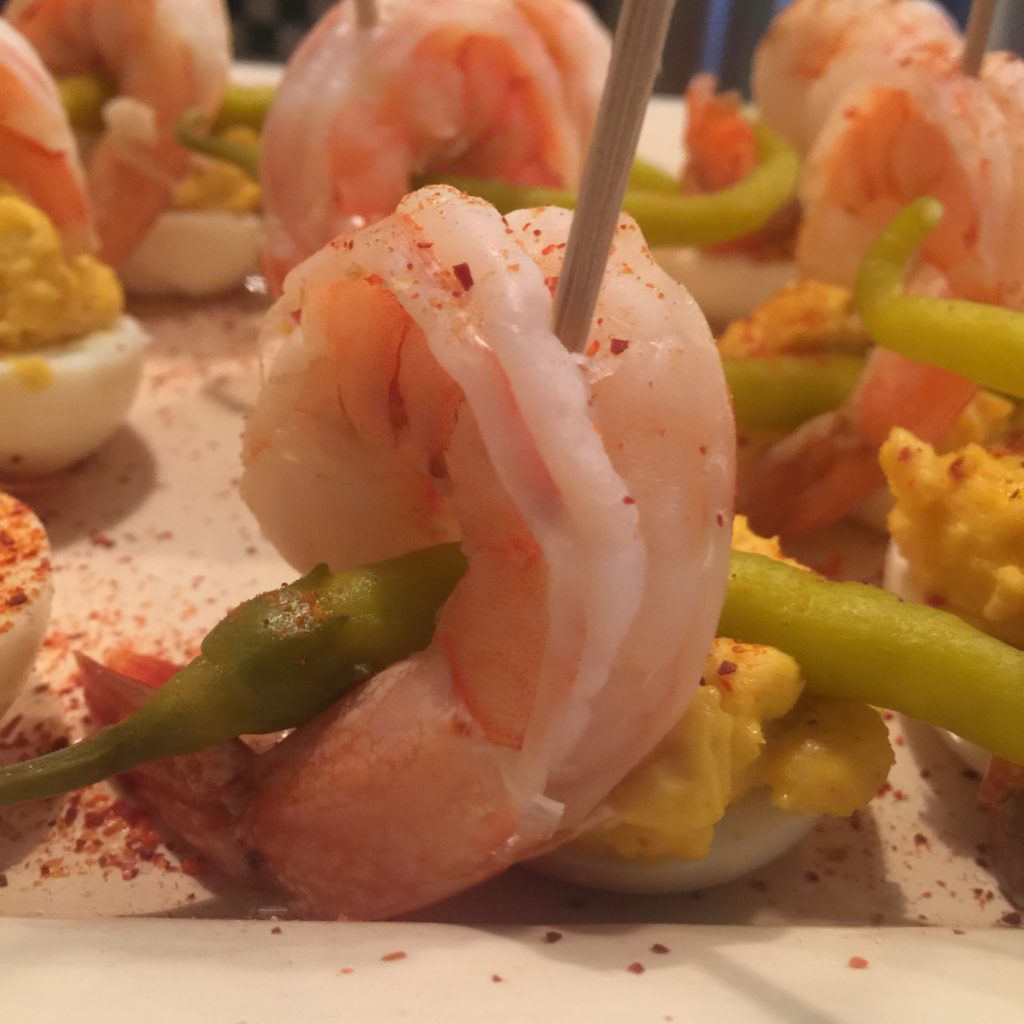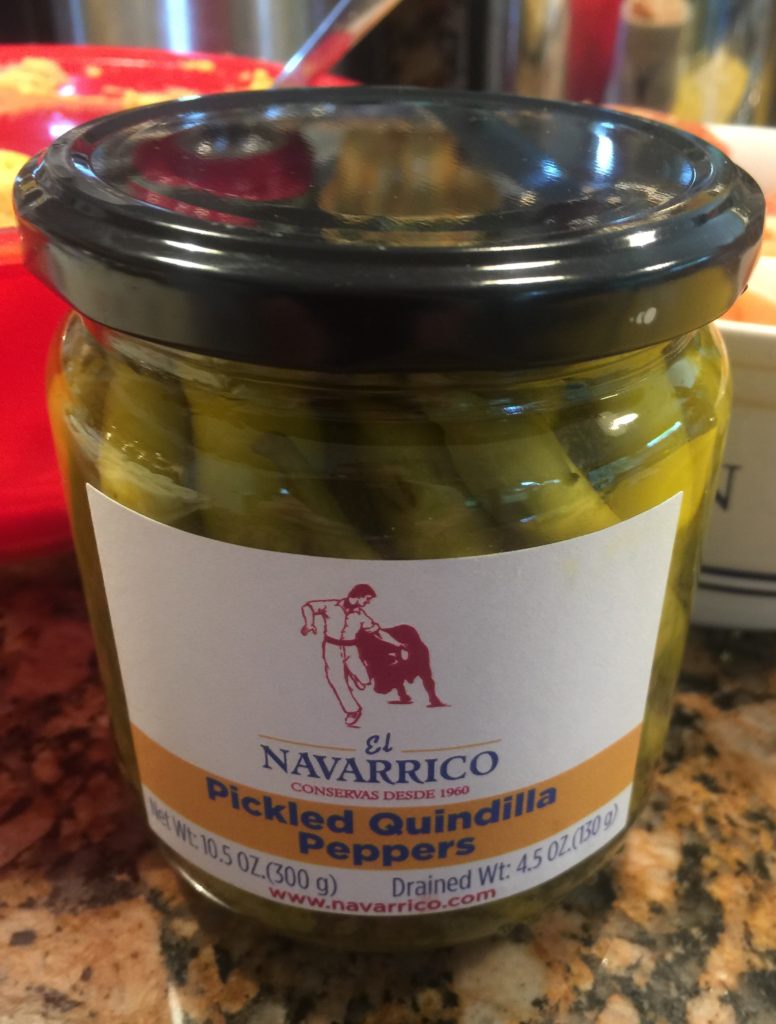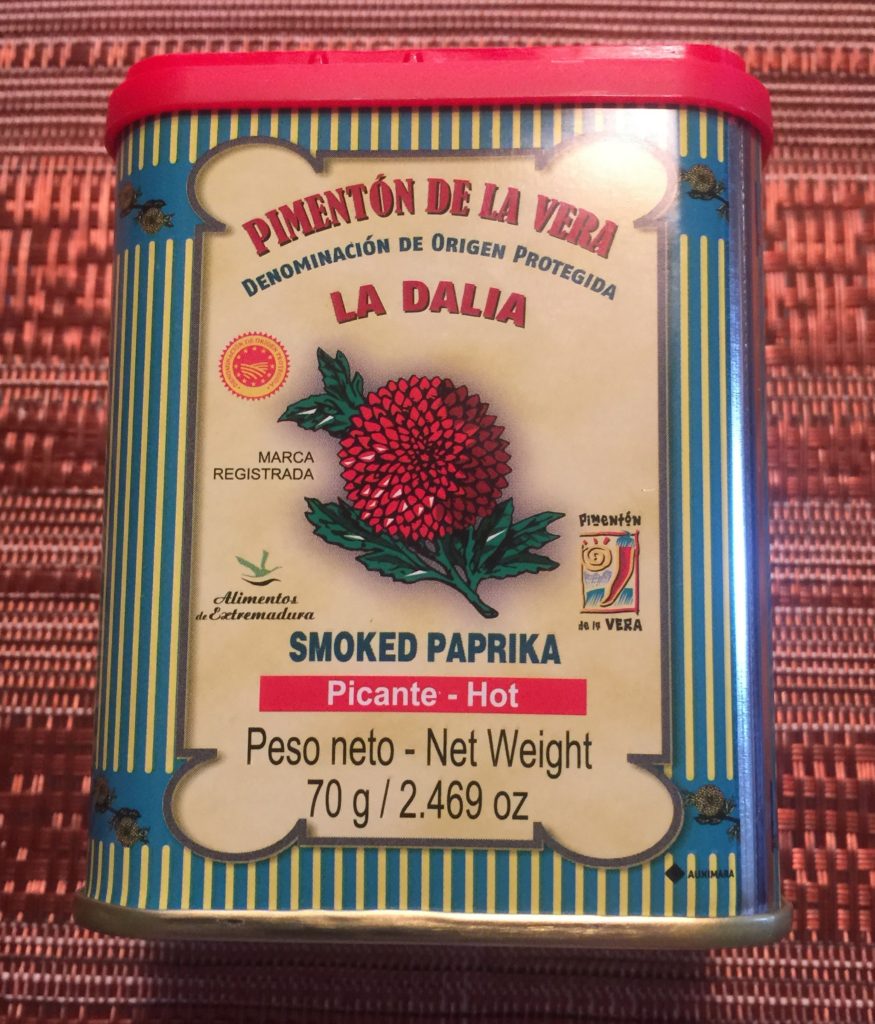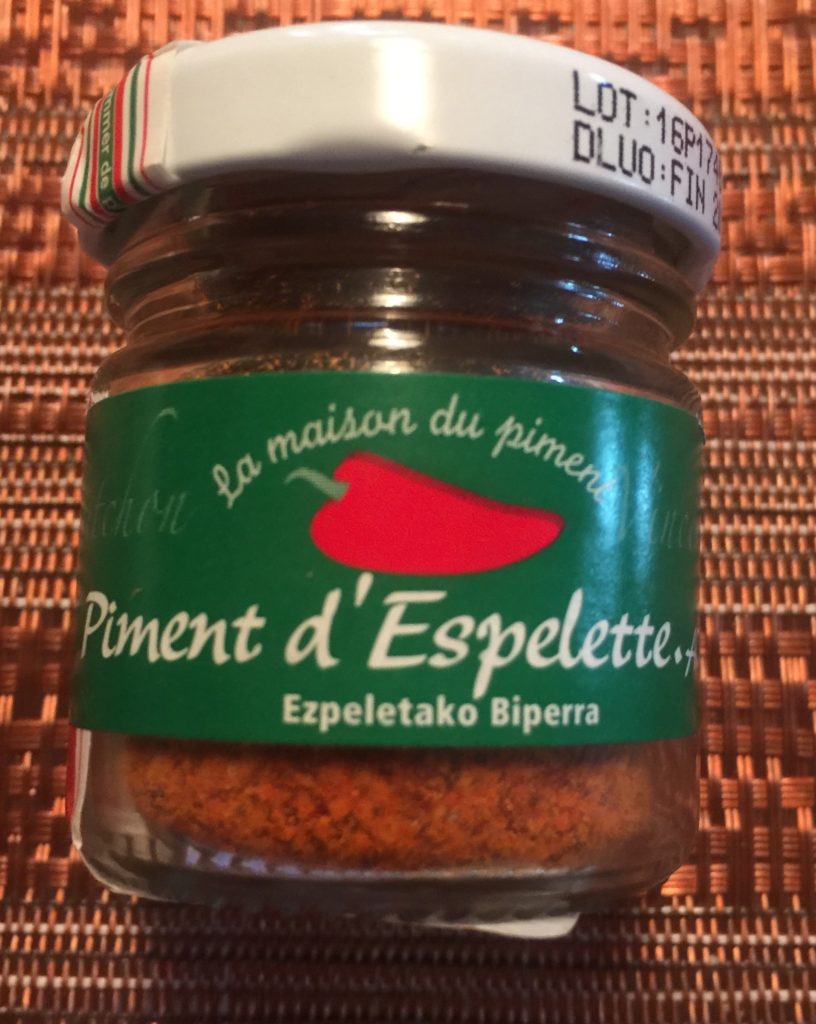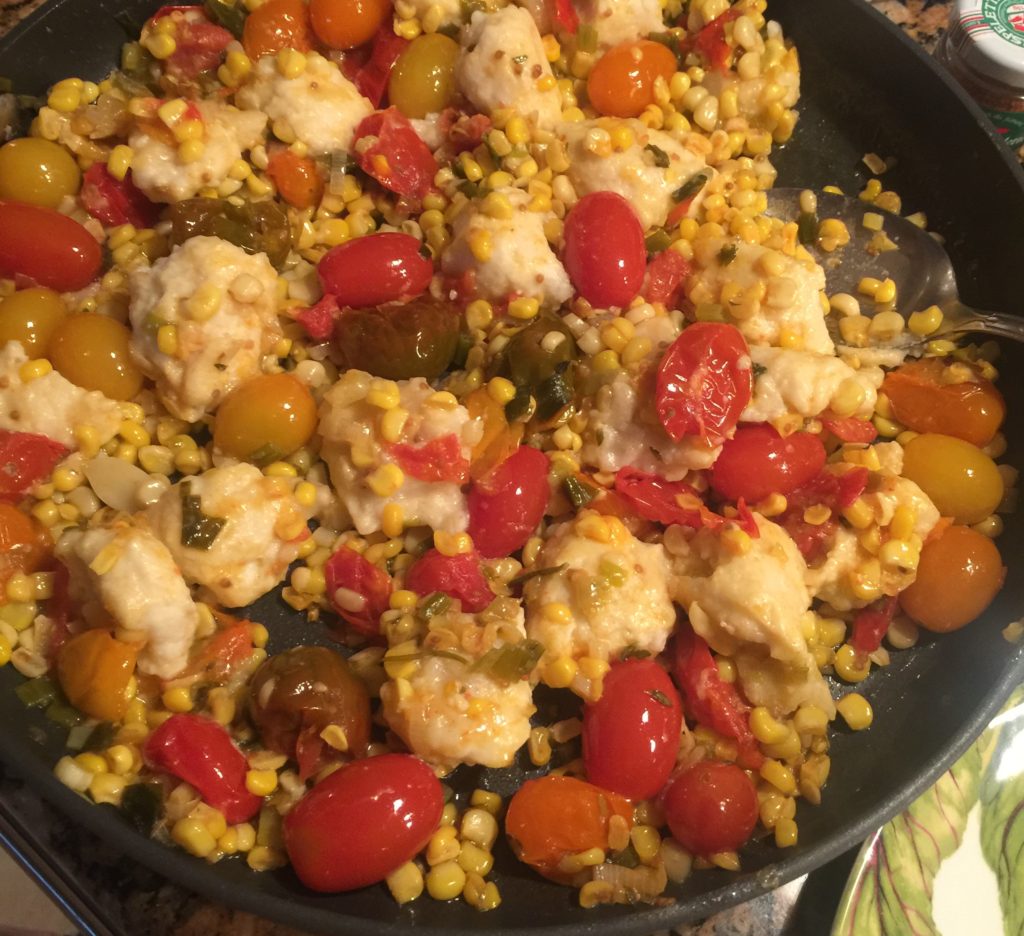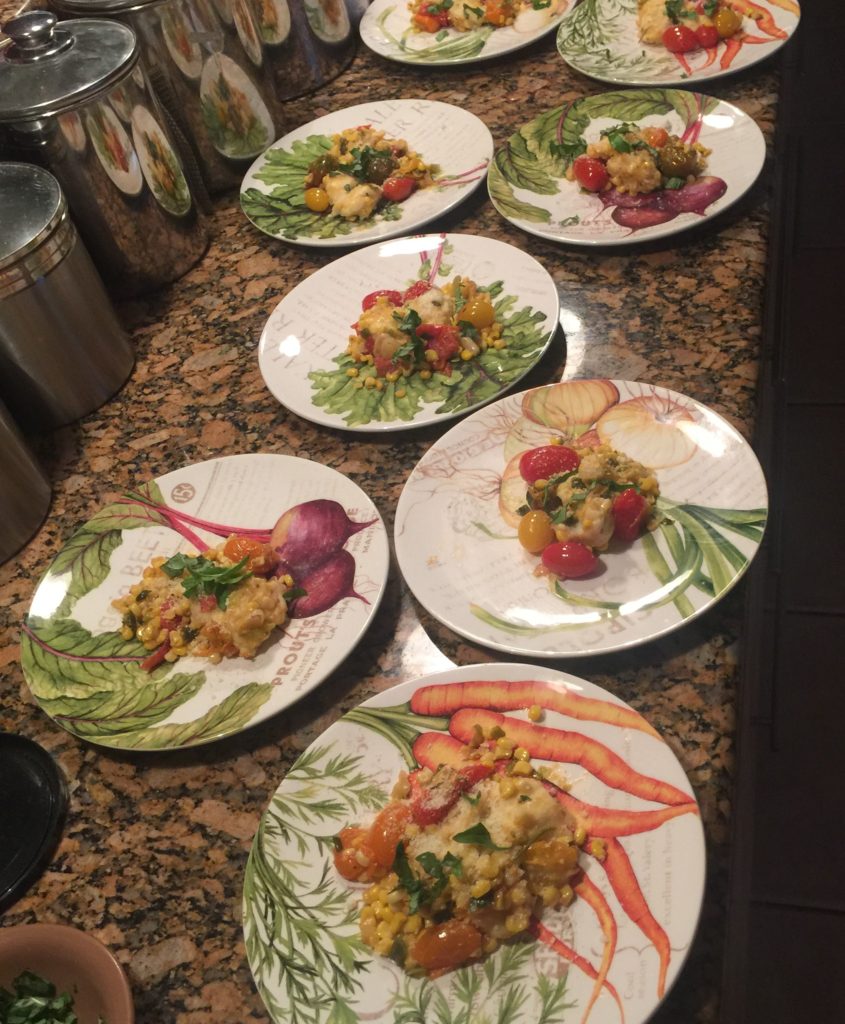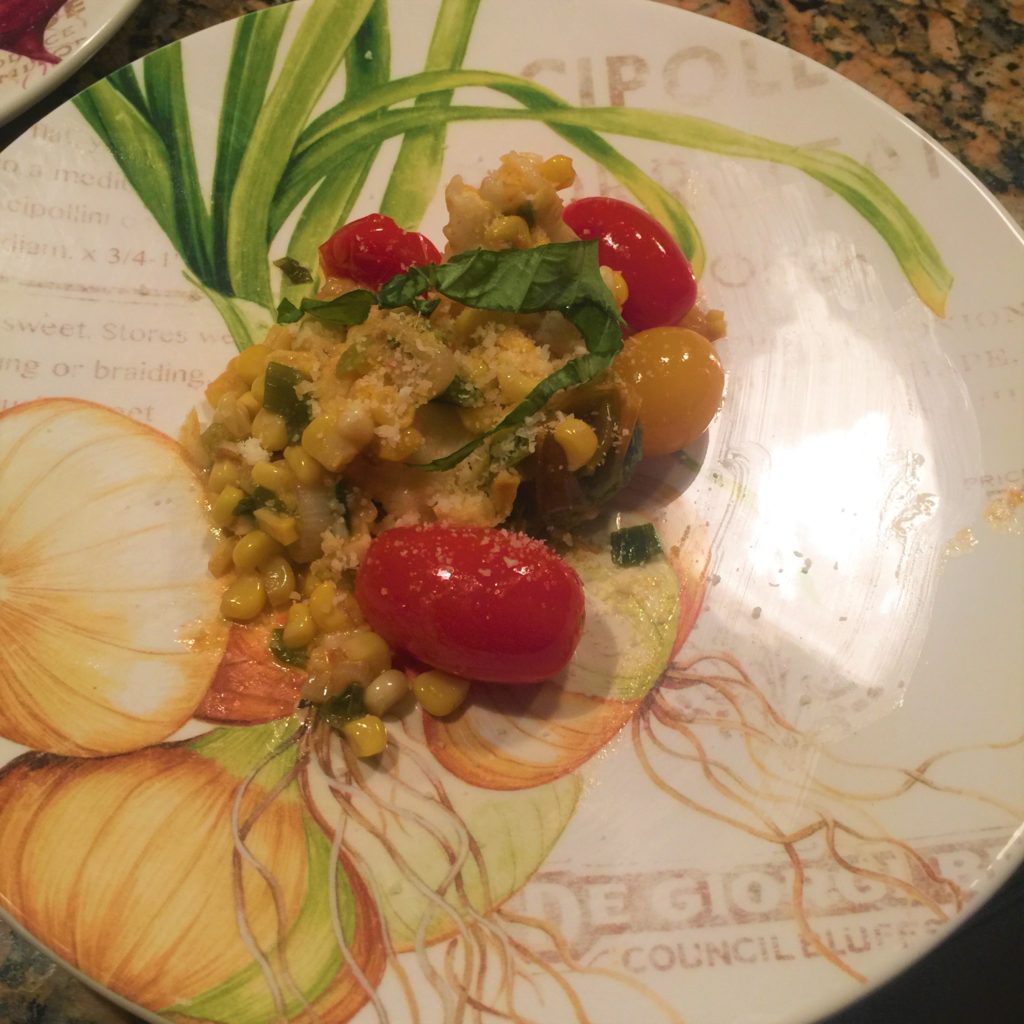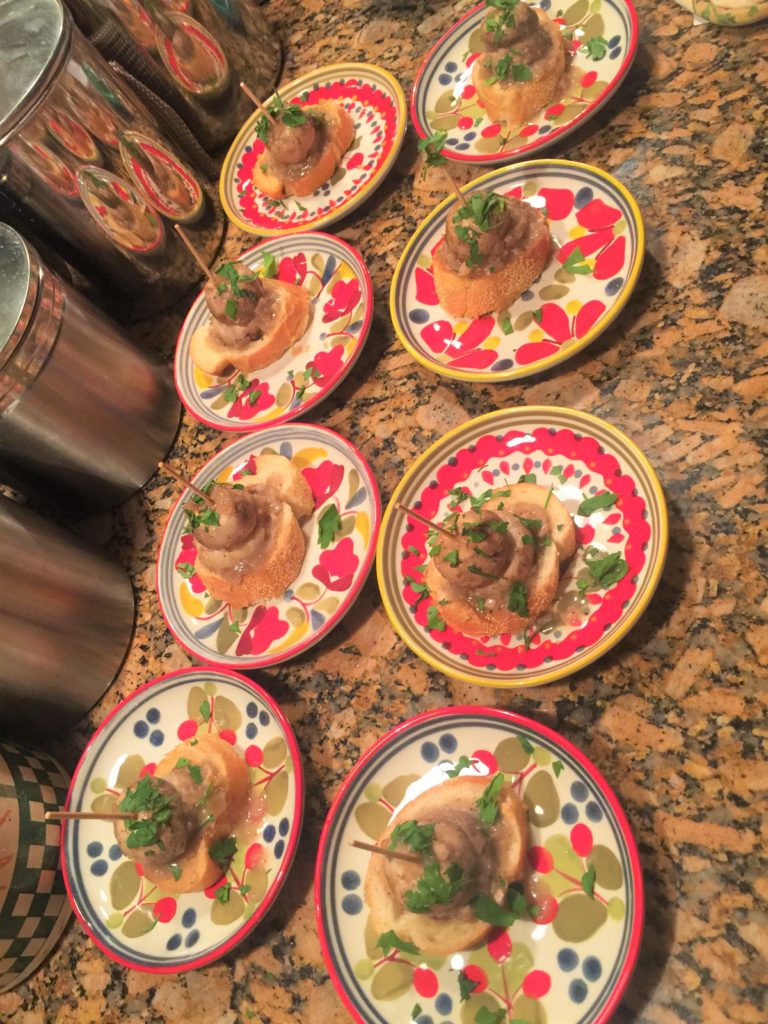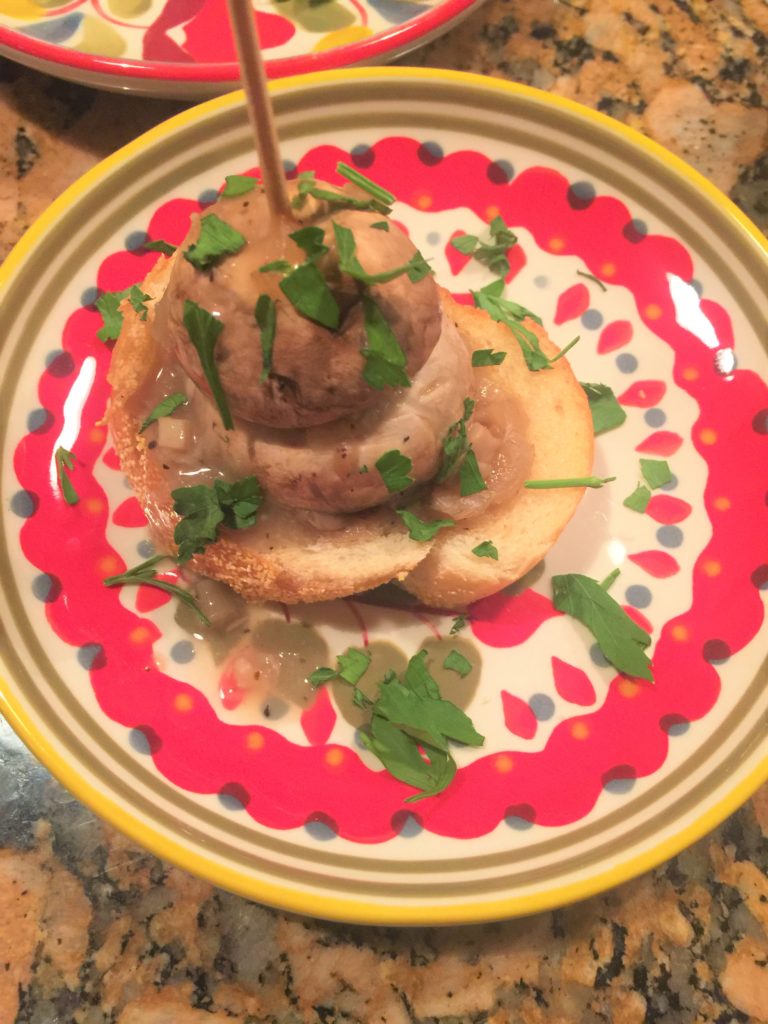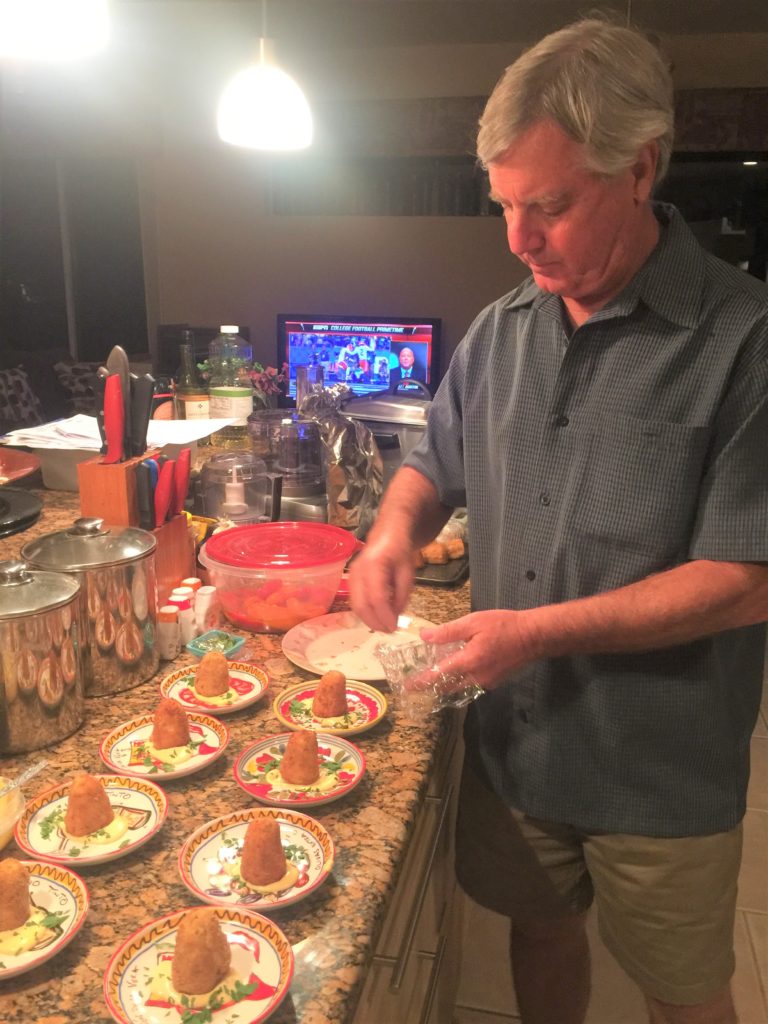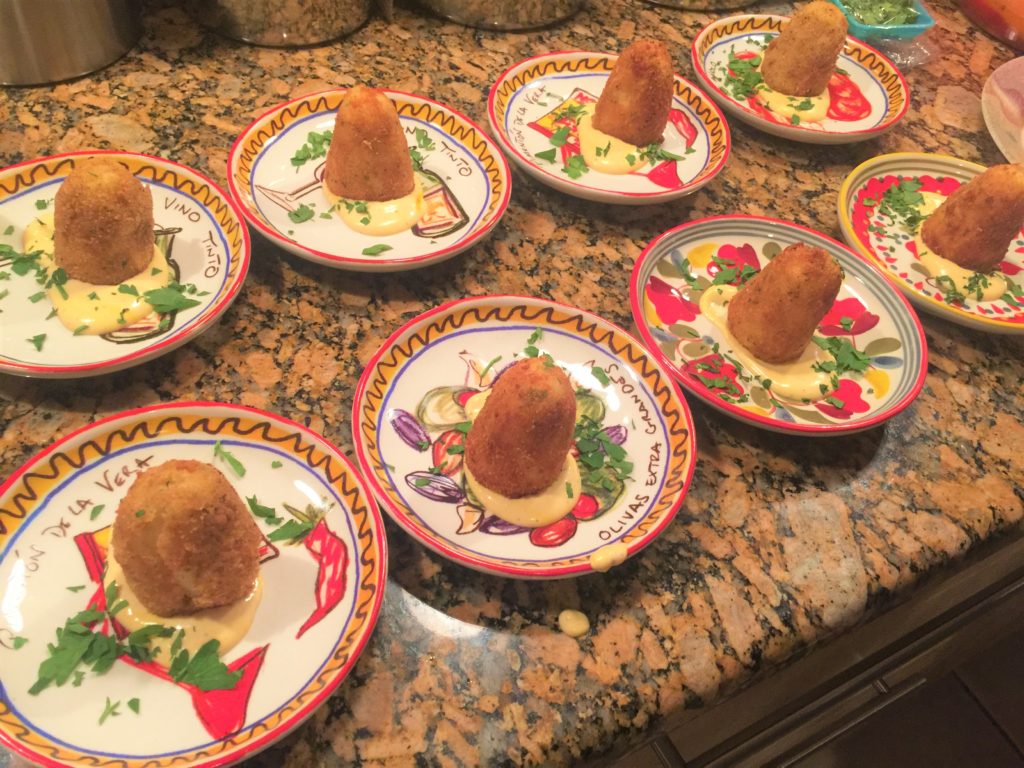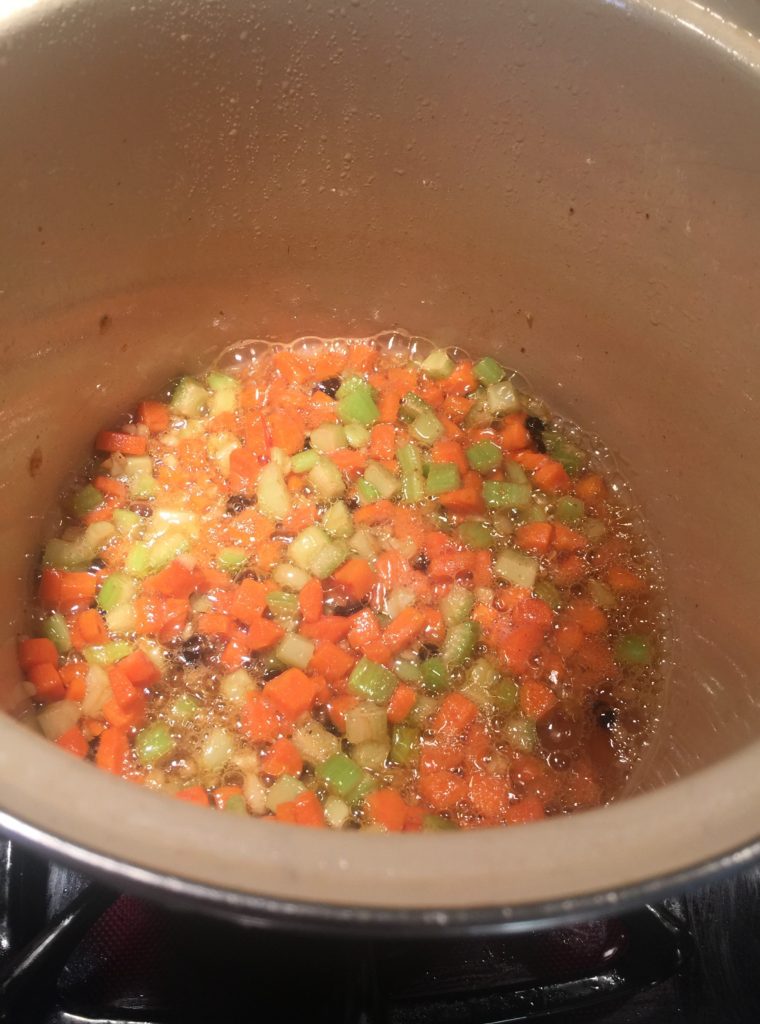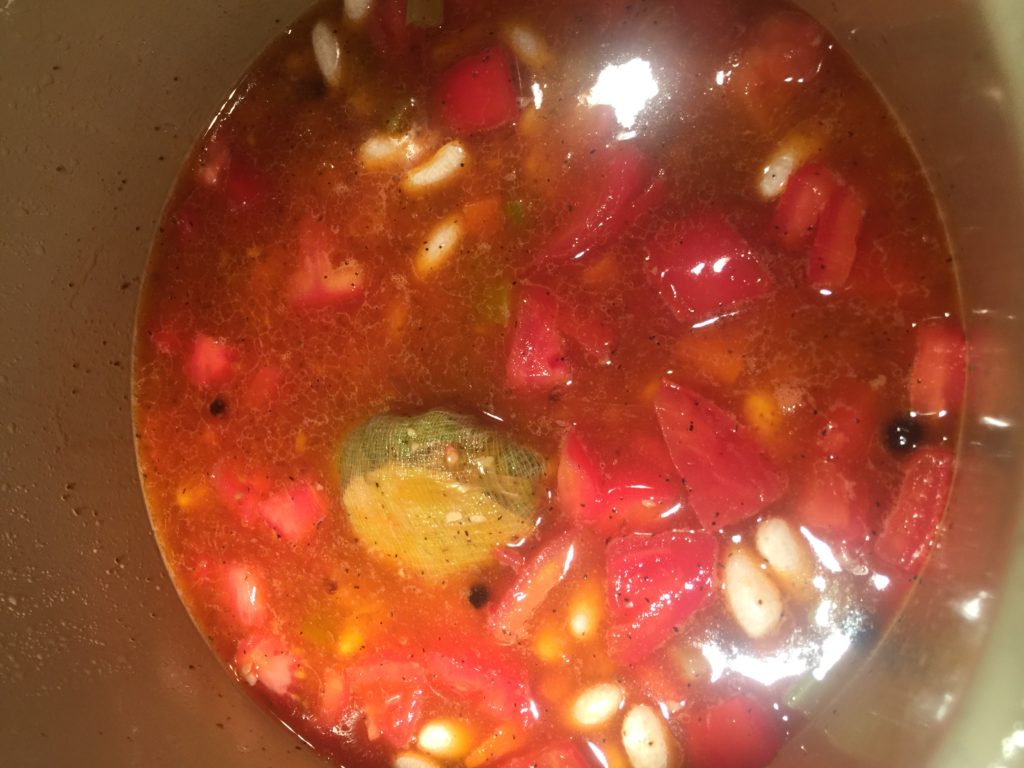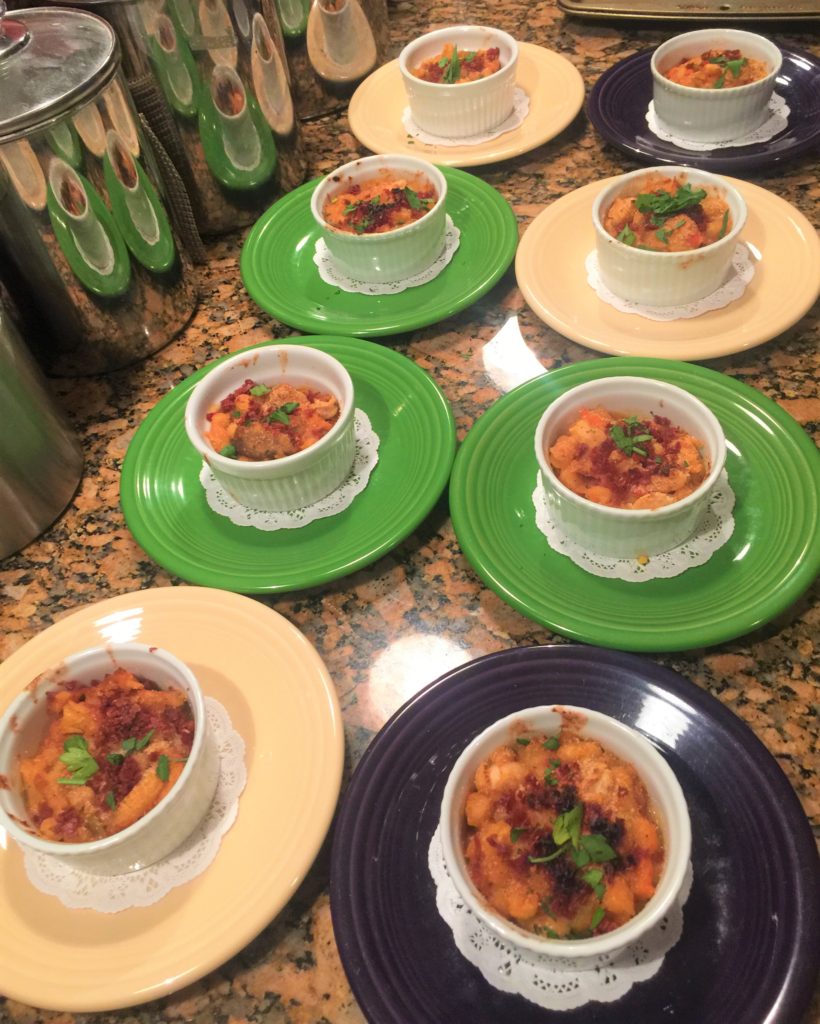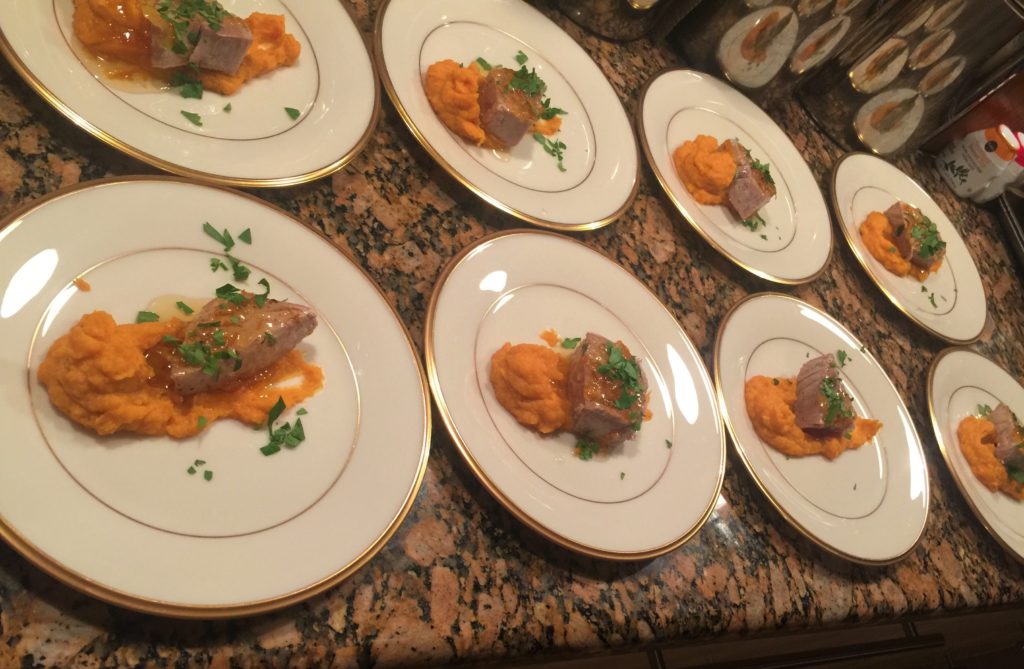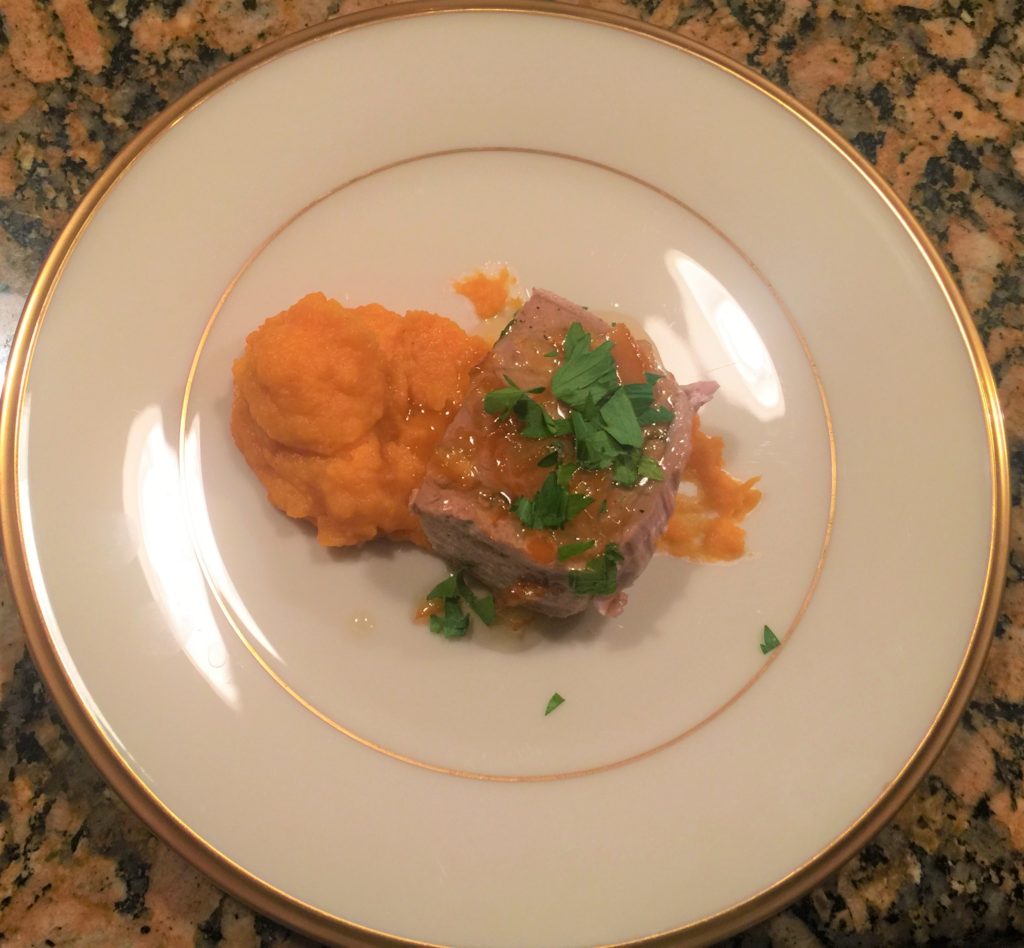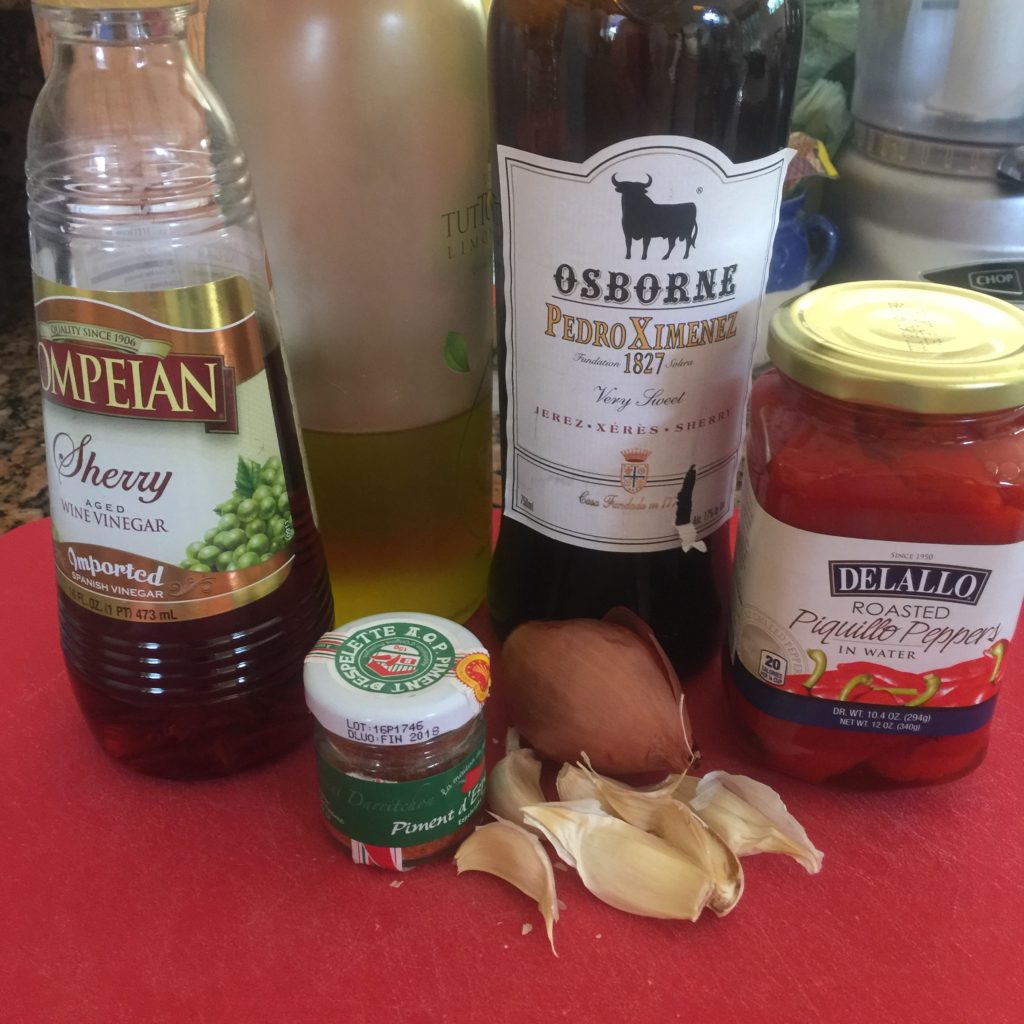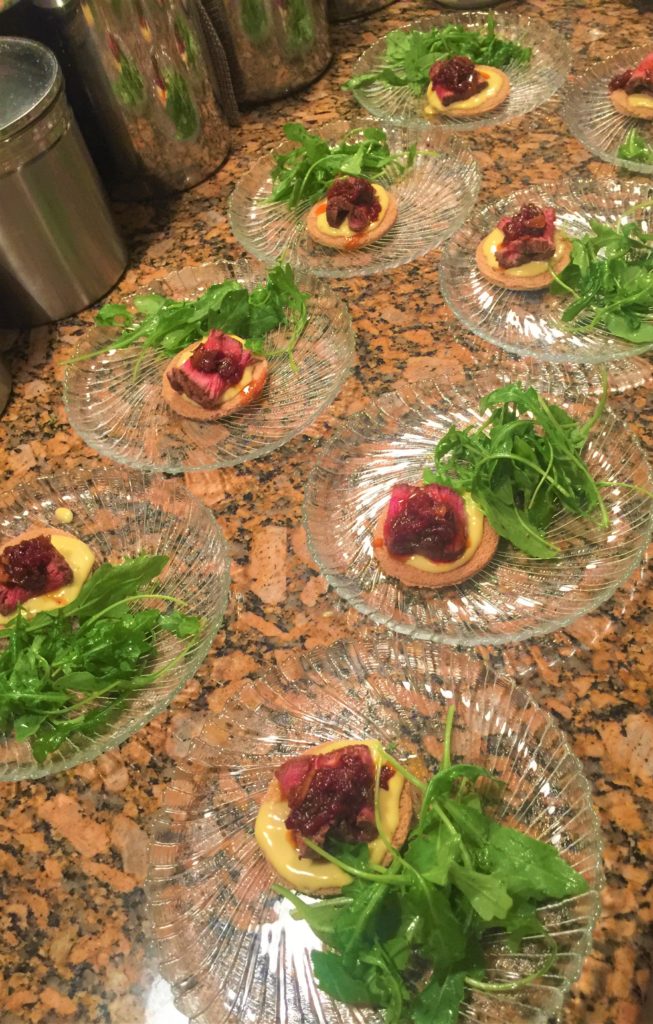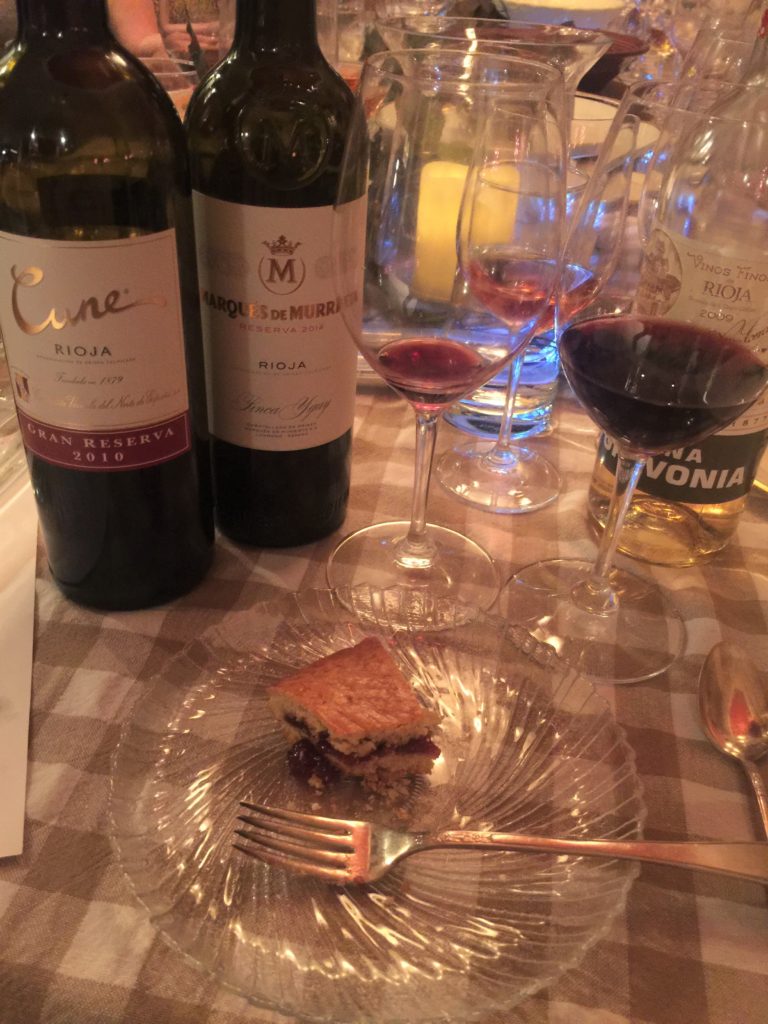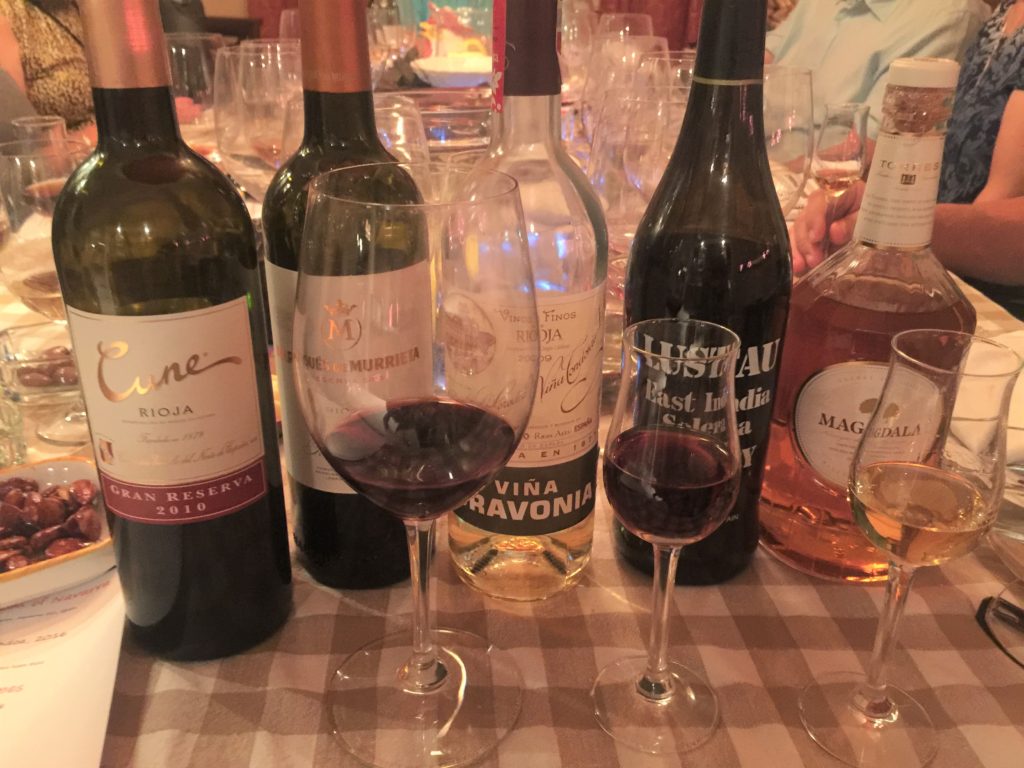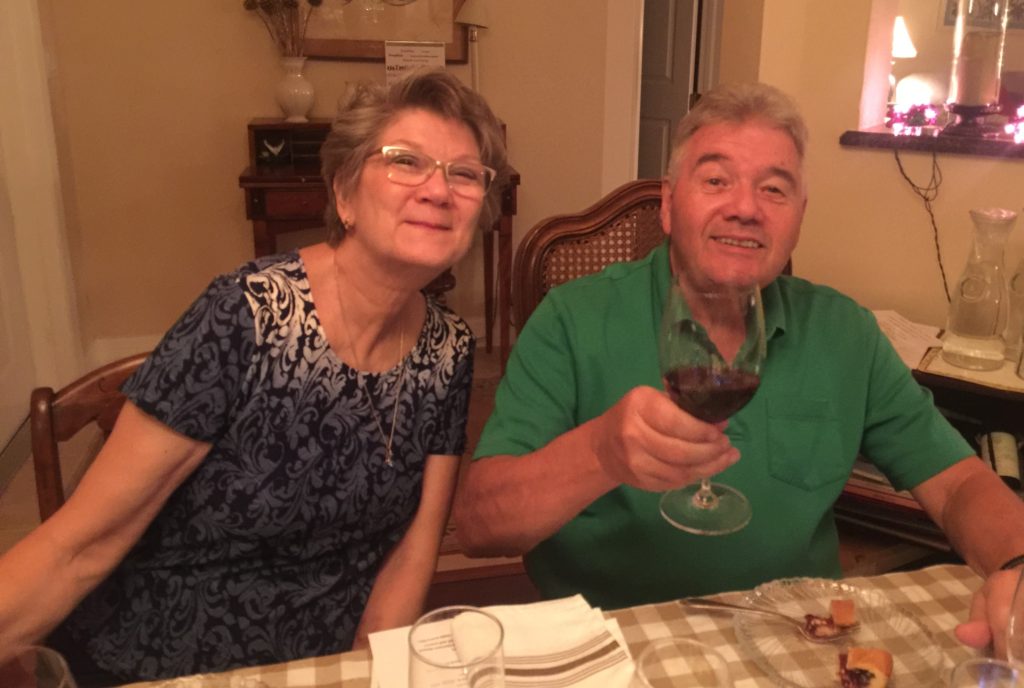Travel along with forkandcorkdivine on our latest armchair adventure as we experience the foods and wines throughout the Pyrenees Basque Region of France and Spain. We recently featured eleven great examples of wines from Basque Country plus Rioja paired with foods selected for their authenticity to the area and how well they compliment the wine. This is the land of Pintxos and Tapas, those beautiful little small snacks featured on tray after tray in every bar or tavern across the area and we intend to try our culinary skill at preparing them.
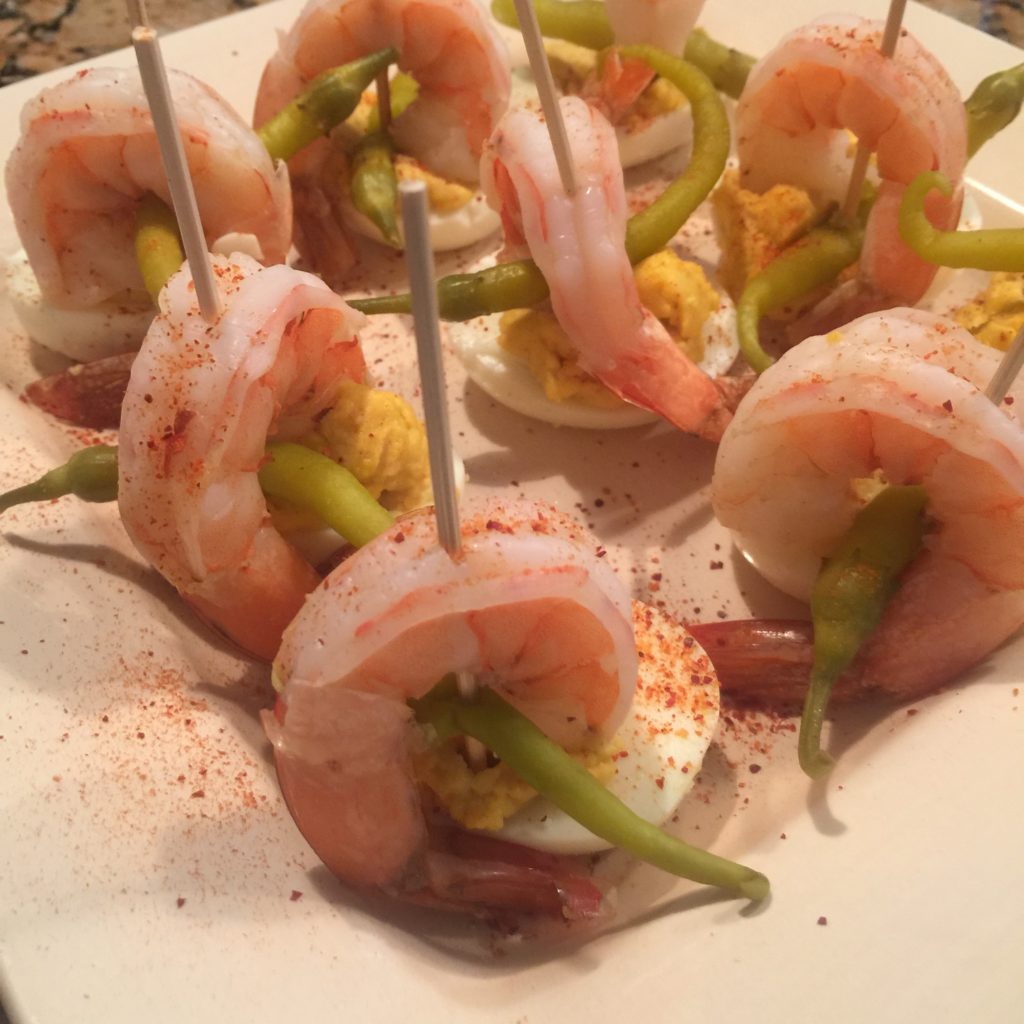
We love to explore wine from regions that are less familiar to us. It is challenging, educational and really enjoyable to delve into the history of a country or wine region, learn about the people, the grapes, the wines, the winemakers, the cuisine, and everything else that goes along with each new adventure. And what makes it even more challenging is the fact that it all happens right here with the help of the internet, wine books, local wine dinners and tastings and some very good friends in the local wine and food community.
The quick scoop on Basque Country
The Basque Region straddles between two countries and consists of seven different provinces of France and Spain. Basque Country, or “Euskal Herria”, is home to 3 million people .
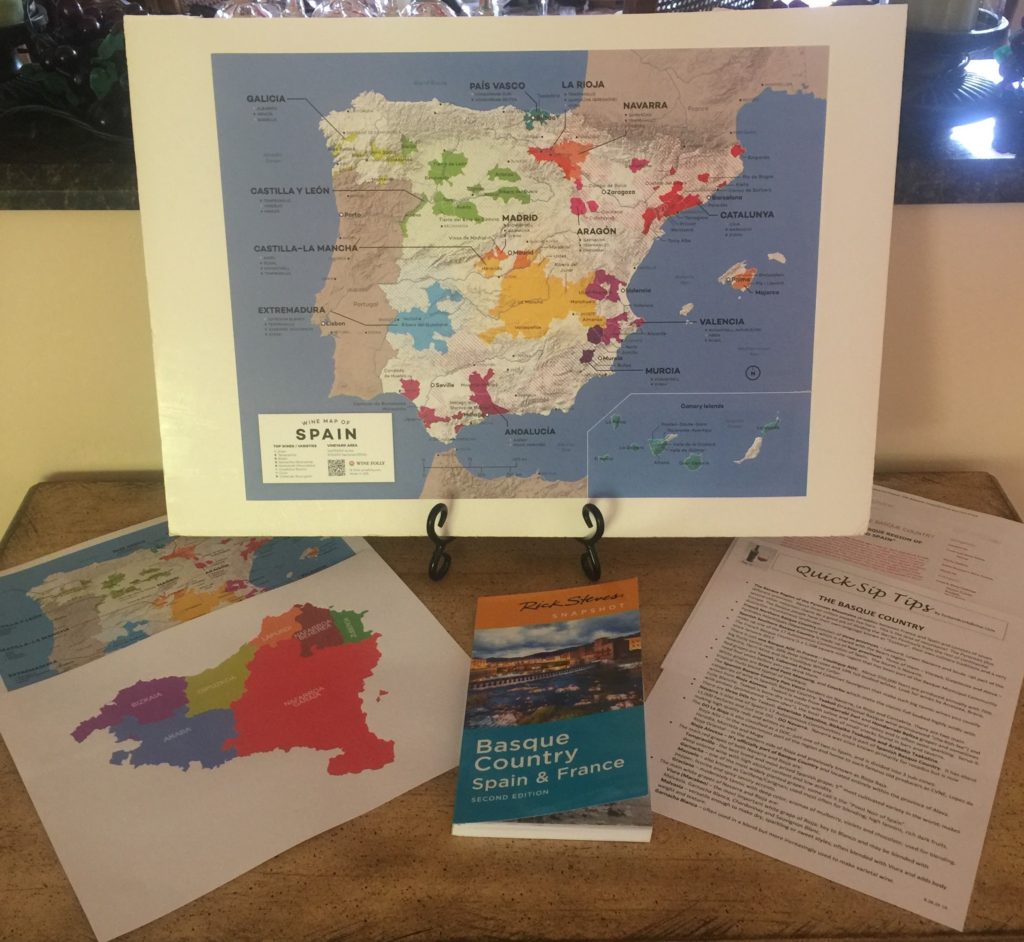
French Northern Basque Country (Pays Basque Français) is made up of three provinces united in one governmental body constituting the Basque Municipal Community since January 2017. It is all part of the Pyrenees Atlantiques Departement which is shared with the Bearn region. There is just one appellation here – the Irouleguy AOC – which produces mainly big fruity tannic red wines, but there are also intensely fruity deeply colored roses and tangy full-bodied whites. The grapes to know about here are Tannat, Cabernet Franc and Cabernet Sauvignon for reds and Gros and Petit Manseng, plus Courbu for whites.
Spanish Southern Basque Country (Pais Vasco) is south across the Pyrenees Mountains and consists of four provinces, three of which make up one of the seventeen Autonomous Communities of Spain. Navarre is the fourth province of Basque Country and has just one appellation, DO Navarra. And then there is La Rioja. We have included it in our wine dinner event because one of the three sub-wine regions of Rioja – Rioja Alavesa – is actually part of Spanish Basque Country. We hated to see the rest of Rioja left out, so we included it. La Rioja is also classified as a DOC, just one of two in Spain. Besides we may not have the opportunity to “travel” back this way again!
There are two main categories of wine in Spanish Basque Country – Txakoli, the traditional Basque wine pronounced “cha-koh-lee”, – and the wines from Rioja Alavesa which are predominantly white (Viura or Macabeo, Malvasia and Garnacha Blanca) with some big reds and rosados. What wine drinker would not be familiar with Tempranillo, the best loved and most prized Spanish grape and the fifth most cultivated in the world! Throw in some Garnacha, Mazuelo and Graciano and you have the basic grapes of both Navarra and Rioja. Our goal is to showcase a few of each!
We will start off with some Txakoli from the Pais Vasco, head north across the Pyrenees to Irouleguy for some of their Tannat and white blends, then head back south across those mountains to Navarra for their excellent Garnacha and Rosado, and finally land in Rioja for some classic Viura, Rose and THE red wine of Spain, Tempranillo! It promises to be a quite rewarding trip!
Now off to dinner! We have included some background on the menu items; i.e. why we selected them, some tips on where to get the ingredients and how to prepare them, and of course some wine information. I have not described the wines in detail as you can read all about the wineries and each wine in my previously posted article of forkandcorkdivine.com titled “Txakoli and Pintxos: THE BASQUE COUNTRY”.
On egin! Buen apetito!
“Txakoli, Pintxos & Tapas”
DINNER IN BASQUE COUNTRY
A Spanish Cava Welcome
Macabeo-Xarello-Parellada Blend (91 pts Vinous)
Raventos I Blanc Blanc de Blanc 2016, Penedes, Spain
The majority of Cava – Spain’s famous sparkling wine – is produced in Catalonia, but it is also made in a number of other regions including Basque Country and La Rioja. it is made from a blend of Macabeo, Xarello and Parellada grapes in the traditional method similar to Champagne. We were introduced to Raventos i Blanc Blanc de Blanc at the Natural Wine Store in Naples, Florida and it is a winner! Raventos is located 40 km west of Barcelona in the DO Penedes wine region. This family has viticulture history since 1497! They are the only Cava producer to estate grow and estate bottle all of their own Cavas. This one was very well balanced with minerality, soft fruit flavors and nutty notes. It was a perfect opener for our wines of the Basque Country, and of course, our little display of tasty bites that showcased those wine notes.
Bacon Wrapped Stuffed Dates
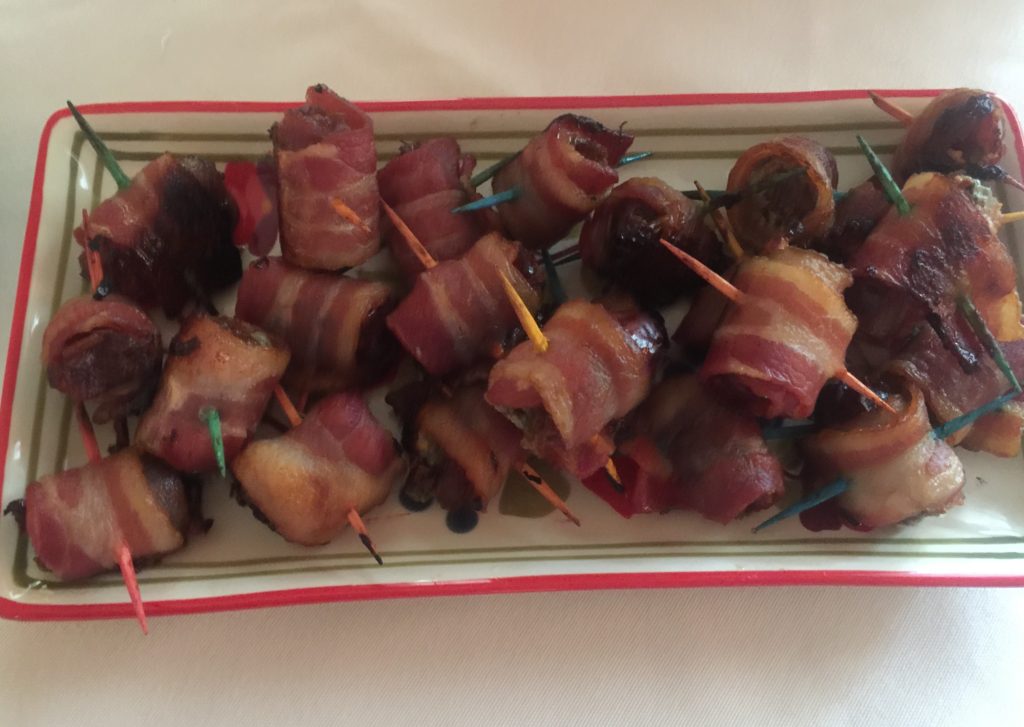
Manchego Cheese with Quince Paste
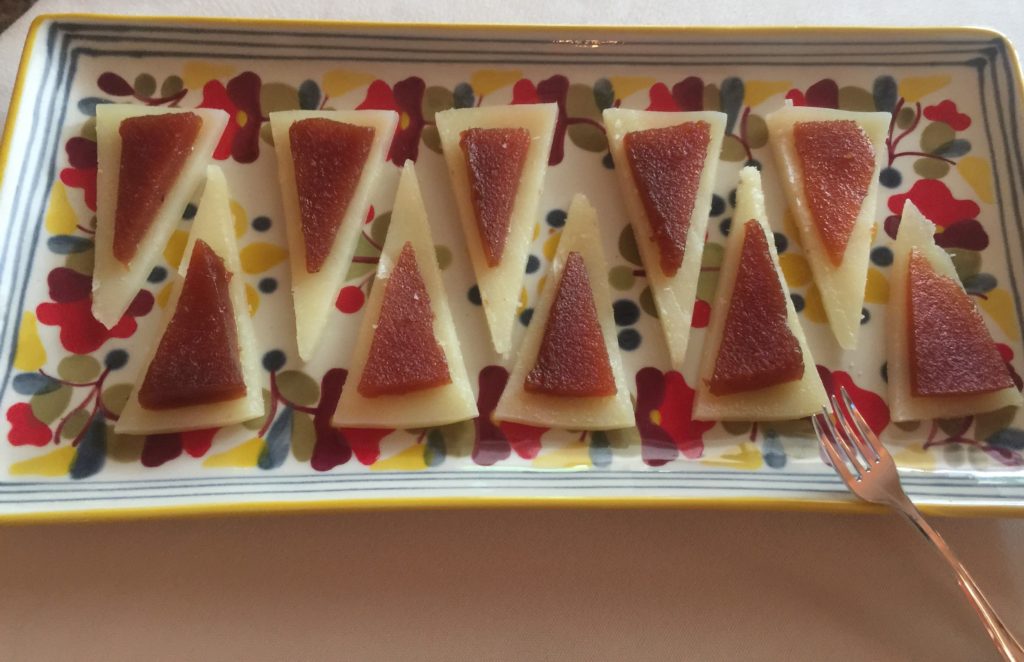
Rosemary Marcona Almonds
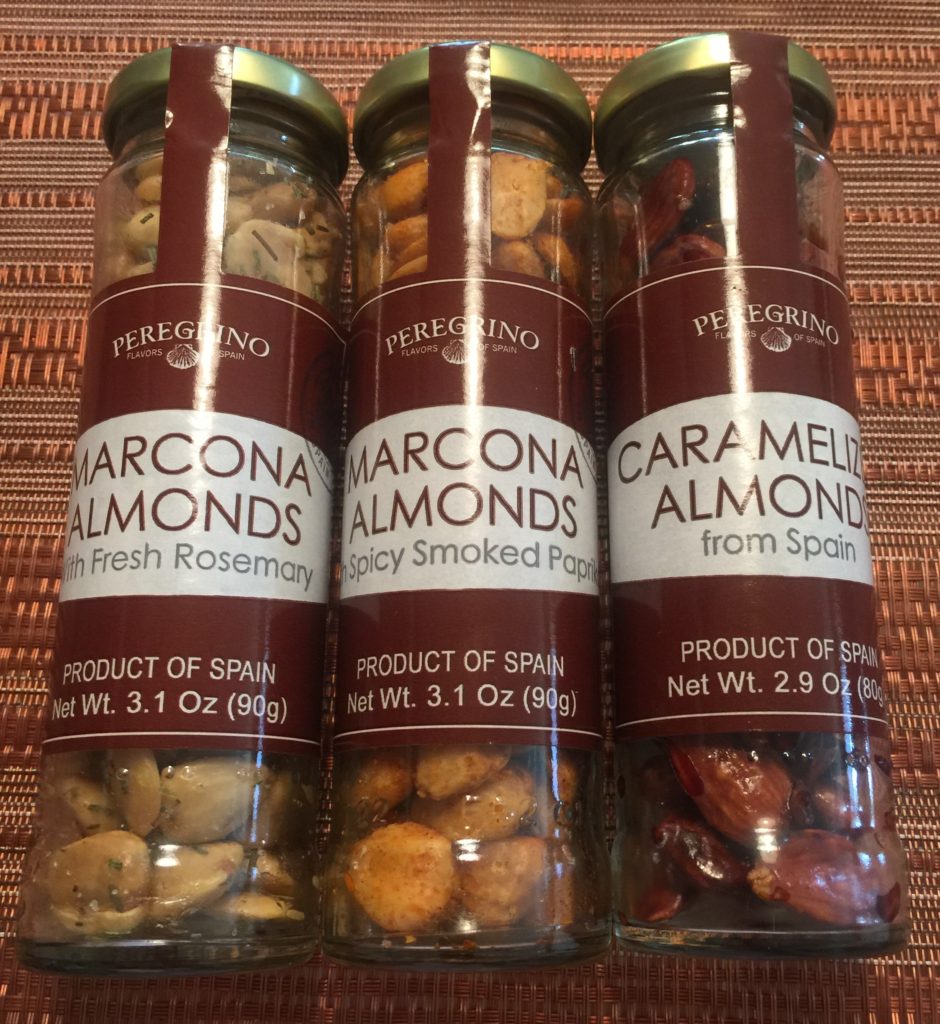
Spanish Olives stuffed with Lemon Peel
Bacon wrapped dates are a traditional Spanish tapa and Debbie did them proud with this particular variation. Manchego DOP cheese is a “must” on any Spanish menu. It is a sheep’s milk cheese quite possibly best known of all the Spanish cheeses and quince paste (membrillo) is often served with it. If you have never tried this combination, please put it on your next cocktail party menu. I found my quince paste at our local Whole Foods Market. I always try to add on a few authentic specialty items to my wine dinner menus, and La Tienda is an internet market specializing in gourmet Spanish groceries. I found my speciality olives, Marcona almonds, peppers, spices, ham, candy and crackers there. Yes, I could probably have found a number of these items locally but one stop shopping is really worth it to me. I did purchase a number of my Spanish cheeses from iGourmet.com as I have found them to have an outstanding variety at fairly reasonable prices. Yes, the very helpful young man working behind the Whole Foods cheese counter told me he could order them for me, but I am so spoiled now just sitting at my computer and letting these specialty groceries come right to my door!
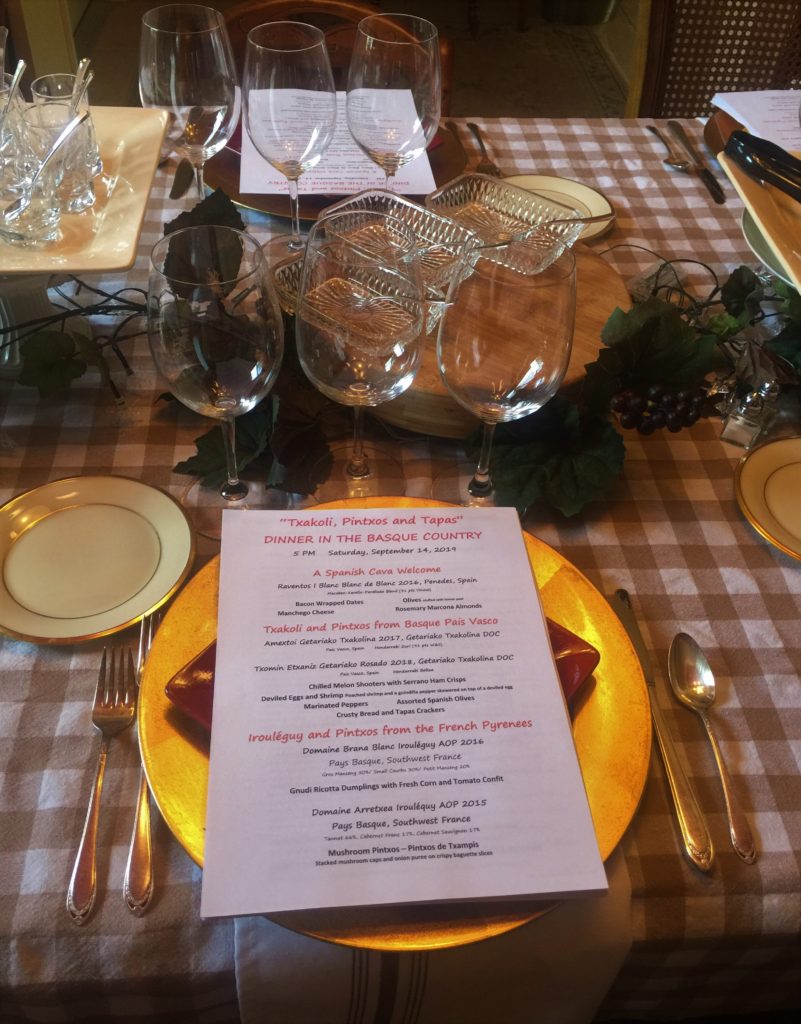
Txakoli and Pintxos from Basque Pais Vasco
Amextoi Getariako Txakolina 2017, Getariako Txakolina DOC
Pais Vasco, Spain Hondarrabi Zuri (91 pts W&S)
Txomin Etxaniz Getariako Rosado 2018, Getariako Txakolina DOC
Pais Vasco, Spain Hondarrabi Beltza
We had our bubbles and were ready for some Txakoli! I think it was a first for all of us and after reading and watching videos of the famous “Txakoli pour”, Chuck practiced his pouring technique. Was it perfect? No, but it was fun and our guests enjoyed the performance. We had the famous Ameztoi from the Getariako Txakolina DOC and a Txomin Etxaniz Getariako Rosado, both excellent examples of Txakoli wines from the Basque Pais Vasco. I knew that we had to pair them with “pintxos” that you would see available at every respectable (?) bar and tavern in the Pais Vasco region. You can read all about Txakoli in my previous post at this link. https://www.forkandcorkdivine.com/?p=2882
This was my opportunity to get yet another cookbook or two, and my first choice was “Pintxos: Small Plates in the Basque Tradition” by Gerald Hirigoyen. Amazon.com quickly took care of me and I was soon selecting a number of items after looking at the beautiful pictures. After all, that’s the first step……….to make the food look beautiful! I lined up my first round of pintxos on elevated platters down the middle of our table to look like a bar in San Sebastian or Bilbao. Here are some pictures of the finished products.
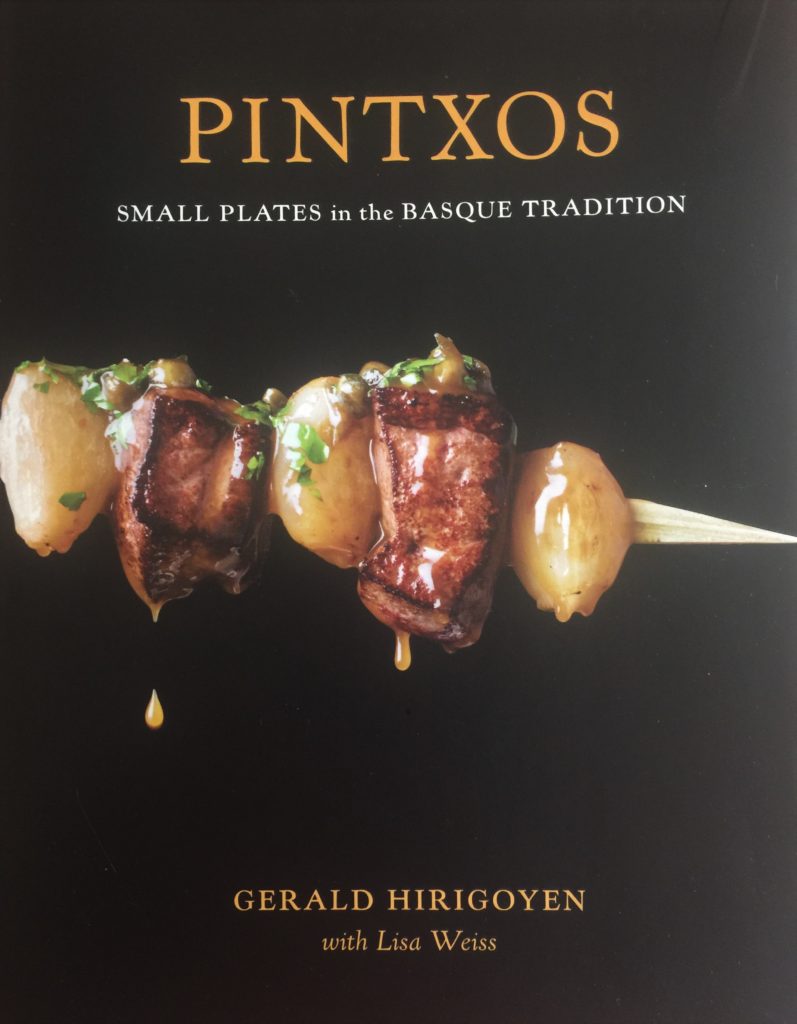
Chilled Melon Shooters with Serrano Ham Crisps
The melon shooters were made by cubing and pureeing a ripe honeydew melon, (you can use any kind of sweet ripe melon) adding some fresh lemon juice and seasoning with piment d’Espelette – one of the two seasonings of choice in many of my recipes. Top with a dusting of it plus a crispy slice of Serrano ham. I oven baked the Serrano ham until pieces were dry and crispy. Some of the slices were for the melon shooters and the rest was for the infamous “ham dust” coming up in another recipe.
Deviled Egg and Poached Shrimp with a Quindilla Pepper
Start out this crowd-pleasing pintxos by hard cooking eggs, then scooping out the yolks and cutting a tiny little slice off the long sides to allow each half to sit there perfectly on your pintxos platter. The yolks get mixed with a garlic Aioli and of course some piment d’Espelette. Be sure to use the largest shrimp you can find (mine were U-11), peeled and deveined with tails on, then poached in garlic, red pepper flakes, salt and lots of lemon. Quindilla peppers are a must! They are chili peppers from Spanish Basque region usually pickled (as were mine) with a fairly mild Scoville Heat Unit about 2.5 times milder than a jalapeno. Skewer it all up and naturally you will sprinkle with some sea salt and more piment d’Espelette!!!!!
Marinated Peppers
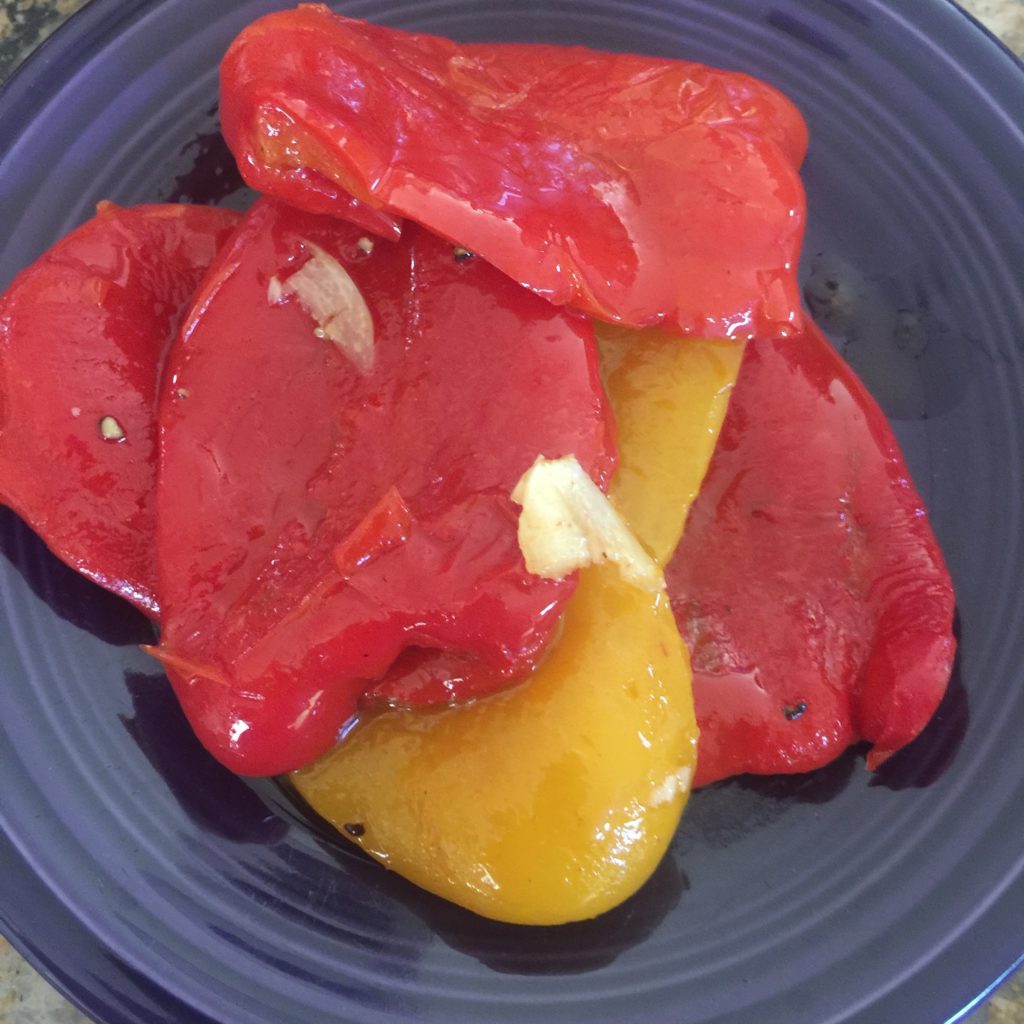
Debbie made these marinated peppers from a recipe in “Spanish Cuisine: Modern & Traditional Recipes of Northern Spain” 2016. The peppers were baked, skins removed, then fried in oil, garlic and seasonings. The EVOO, lemon juice and vinegar worked their magic while the peppers chilled in the refrigerator. They were tasty and authentic.
Assorted Spanish olives

Crusty Bread and Tapas Crackers
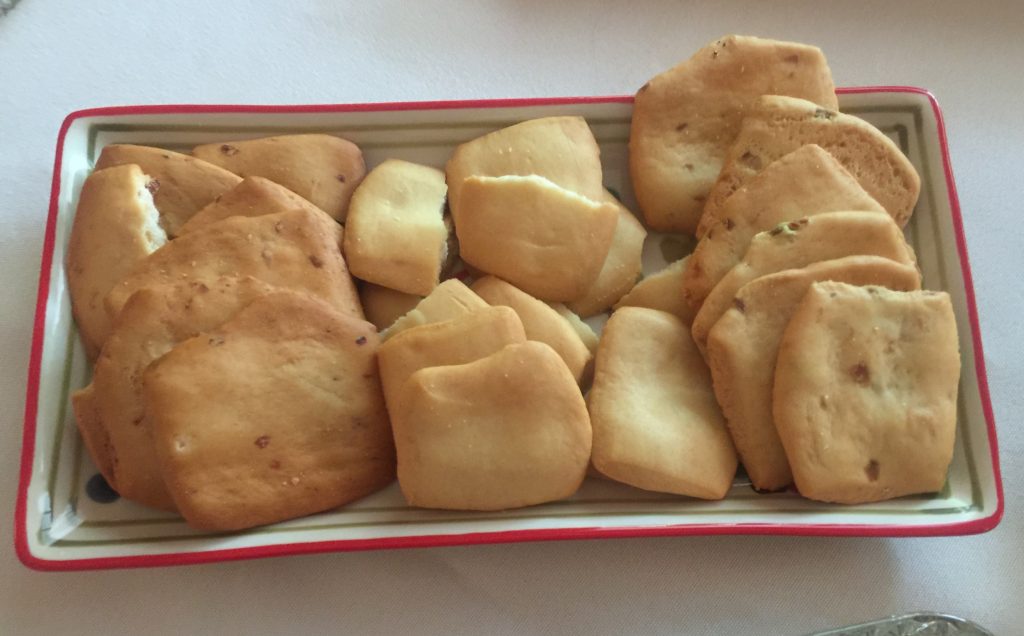
Here are some of the spices you should definitely have on hand for preparing authentic Spanish and Basque cuisine – Pimenton smoked paprika both hot and sweet plus Piment d’Espelette. Pimenton is a dried Spanish pepper powder. This Pimenton de la Vera is a smoked DOC product and can be “dulce’ sweet, “agrodulce” bittersweet or “picante” spicy. It’s a distant cousin to Hungarian paprika. The Piment d’Espelette is a red chili pepper made from peppers in the Basque region of France and Spain and are named after the French village of Espelette. It is more delicate than cayenne pepper. Supposedly people in the French Basque region use it in place of black pepper. It seemed to end up in all of my Basque recipes.
Irouléguy and Pintxos from French Pyrenees
Domaine Brana Blanc Irouléguy AOP 2016
Pays Basque, Southwest France
Gros Manseng 50%/ Small Courbu 30%/ Petit Manseng 20%
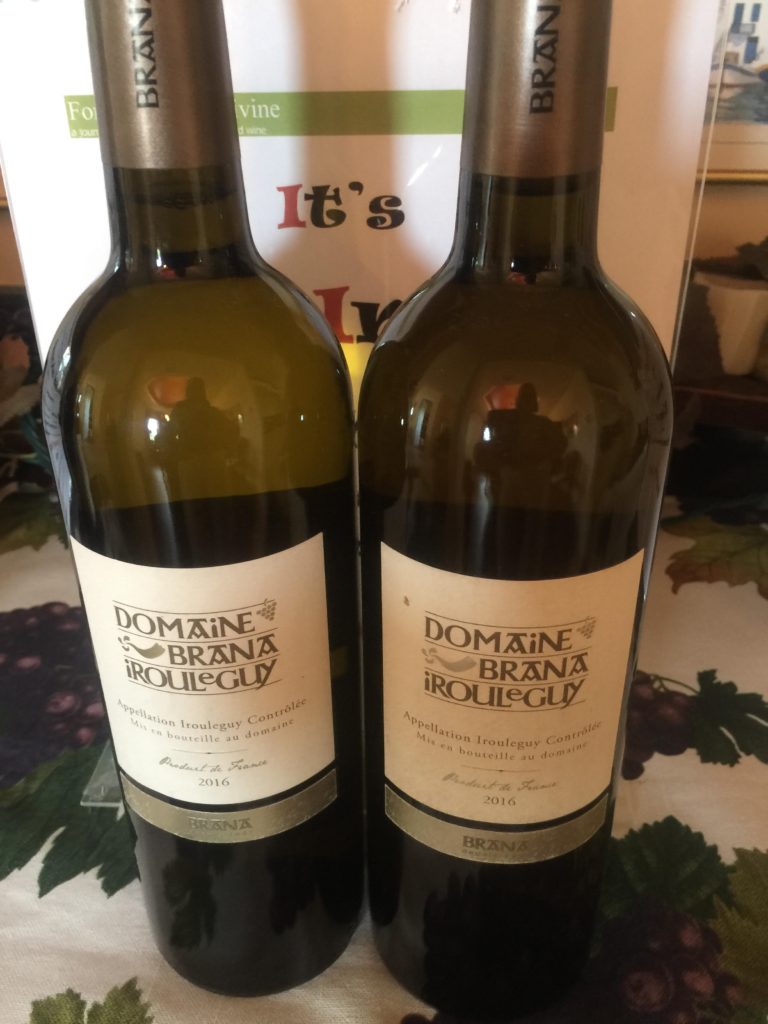
Gnudi Ricotta Dumplings with Fresh Corn Tomato Confit
Gnudi are more rustic and easy to make than gnocchi. Gnudi is made with ricotta cheese instead of cooked potatoes and can be scooped right out of a loose dough for cooking in simmering water instead of the kneaded, rolled and cut gnocchi. I absolutely love them both, but this recipe was recently featured in a Wine Spectator magazine and came with a recommendation for pairing with a Petit Manseng wine. Since our white Irouleguy is made from a blend of Petit and Gros Manseng, it sounded like a marriage made in heaven.
The fresh tomatoes and corn get cooked with herbs and garlic in an olive oil bath until the tomatoes pop and start to shrivel. Drain off the olive oil but be sure to save it for making vinaigrette or aioli as it is now filled with flavor. Mix up the gnudi batter without stirring too much. I also learned on my first attempt that you must not put too much ricotta in the mix, and you should then refrigerate the batter till ready to use. This will help it to stay together in much neater little spoonfuls when you cook them. The dish makes a beautiful colorful plate especially if you use multi-colored cherry tomatoes. And the chef was right about that pairing – our white blend of Petit and Gros Manseng was outstanding with this dish!
Domaine Arretxea Irouléquy AOP 2015
Pays Basque, Southwest France
Tannat 66%, Cabernet Franc 17%, Cabernet Sauvignon 17%
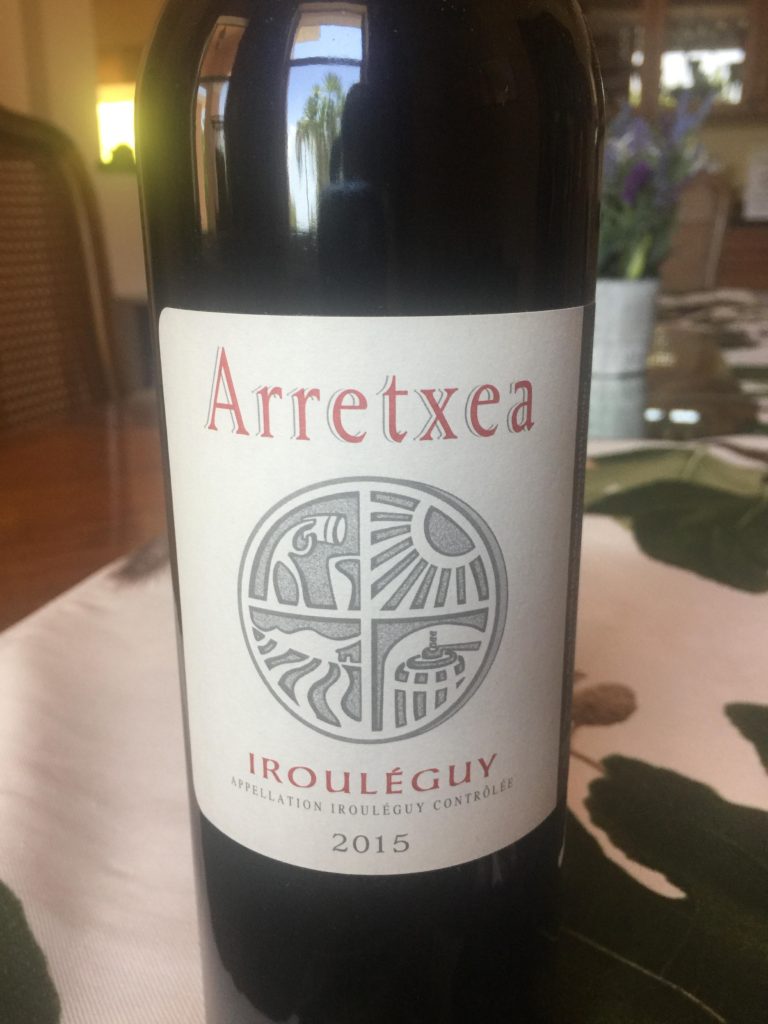
Mushroom Pintxos – Pintxos de Txampis
Stacked mushroom caps and onion puree on crispy baguette slices
This was a perfect way to serve up mushrooms as a pintxos. One of our guests said it tasted just like French onion soup! That is probably because Chuck caramelized shallots in white wine, pureed and seasoned it, then cooked the mushroom caps in the onion puree. To put it into a perfect work of art, start with a crisped baguette slice that has been brushed with EVOO, spread on some onion puree, one mushroom cap, some more puree, another mushroom cap, then some more of that delicious puree. Hold it all tightly together with a tall skewer and garnish with some parsley and be sure to serve it right from your warming oven. That Tannat red blend from Arretxea was so well balanced with aromas of cassis, raspberry and licorice followed by some black fruit, herbs and minerality. You won’t often see wines of Irouleguy on a shelf anywhere, but I recommend that you seek some out and try them. I had to purchase all of mine from the internet along with almost every other wine that we served.
Garnacha and Pintxos from Navarra
Artazu Garnacha Artazuri Rosado, 2017, 100% Garnacha, Navarra DO, Spain
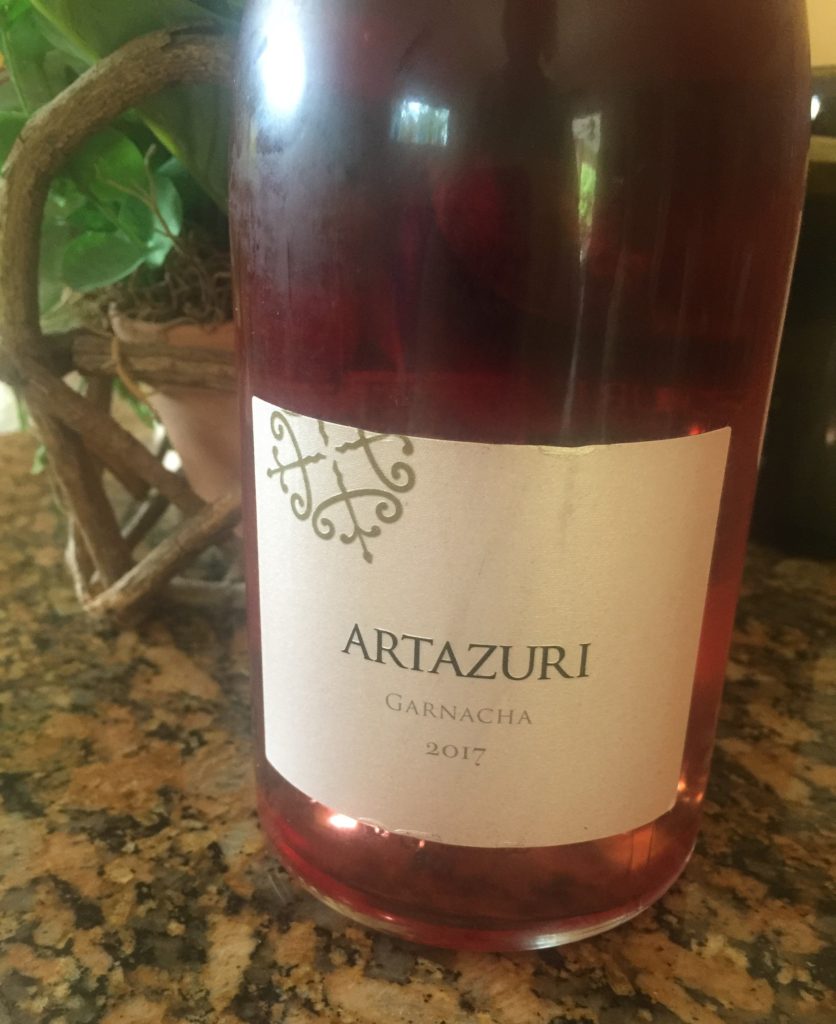
Potato Croquetas with Saffron Alioli
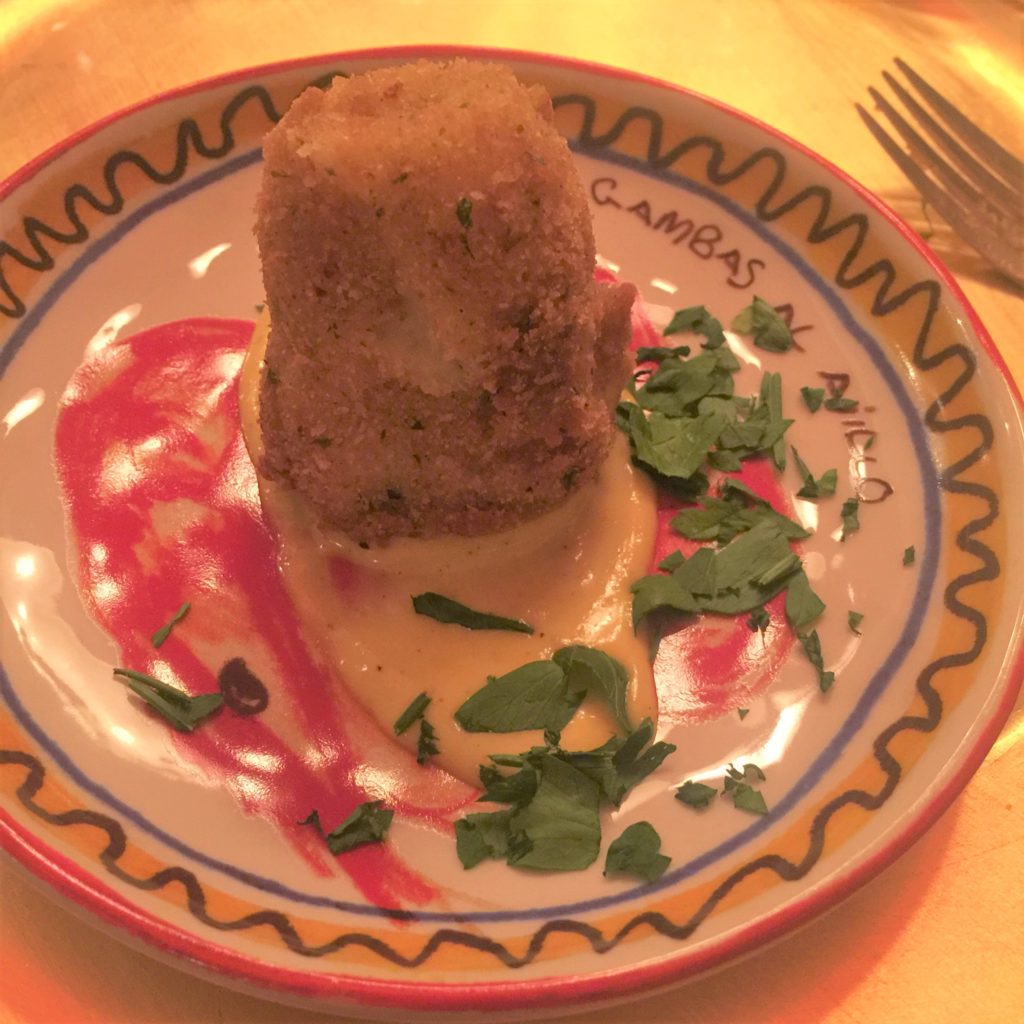
You can’t serve pintxos or tapas without some croquetas and we chose to do potato croquetas with a saffron alioli. The raw croquetas were perfectly shaped by Mariann and then Al quickly fried them in my Waring Pro deep fryer. Yes, I know it’s deep fried! But sometimes you just can’t beat that quickly and perfectly deep fried item done in “first use” oil. I always keep plenty of canola oil on hand. Somehow I just haven’t been able to bring myself to buy an air-fryer, yet one more small appliance to keep on my ever-expanding shelves of cooking equipment! The saffron alioli was just THE most perfect dipping sauce for our croquetas. There are many versions for croquetas, but this one came from Gourmet magazine way back in 2004. Sometimes oldies are best!!!!!
The Artadi Garnacha Rosado was fresh and floral with some intense strawberry and cherry aromas and herbal notes. It was a perfect choice with the croquetas.
Bodegas Nekeas Garnacha El Chaparral de Vega Sindoa, 2016
100% Garnacha, Navarra DO, Spain (92 pts V)
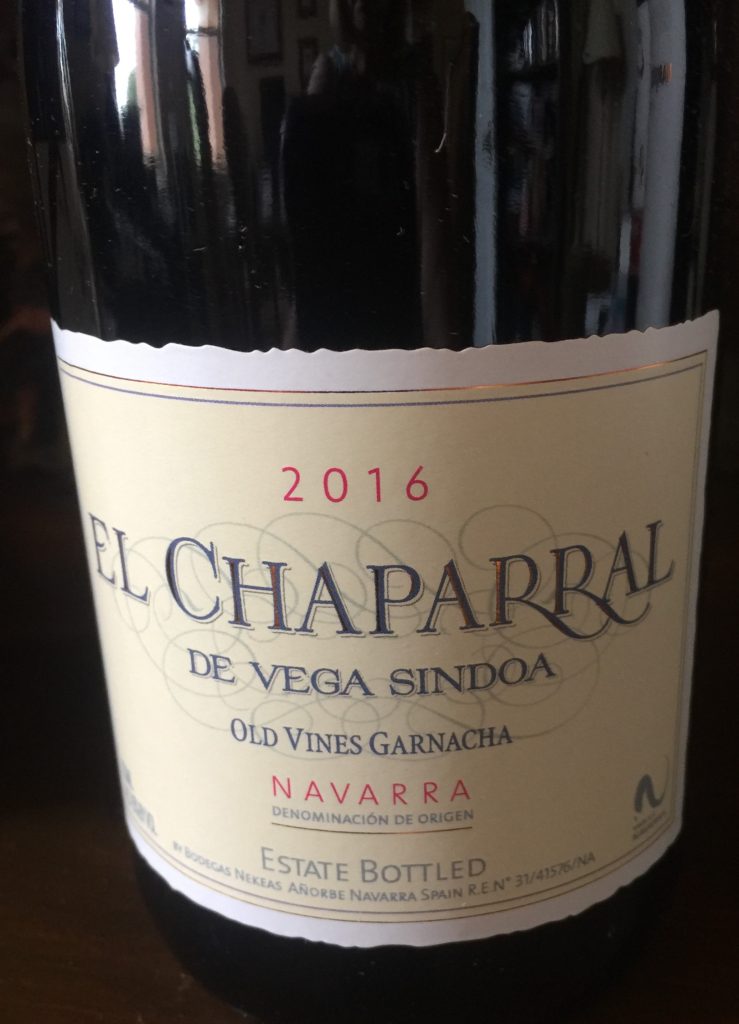
Poor Man’s Cassoulet
Cannellini beans and pork belly baked in mini casseroles with bread crumbs and Serrano ham dust
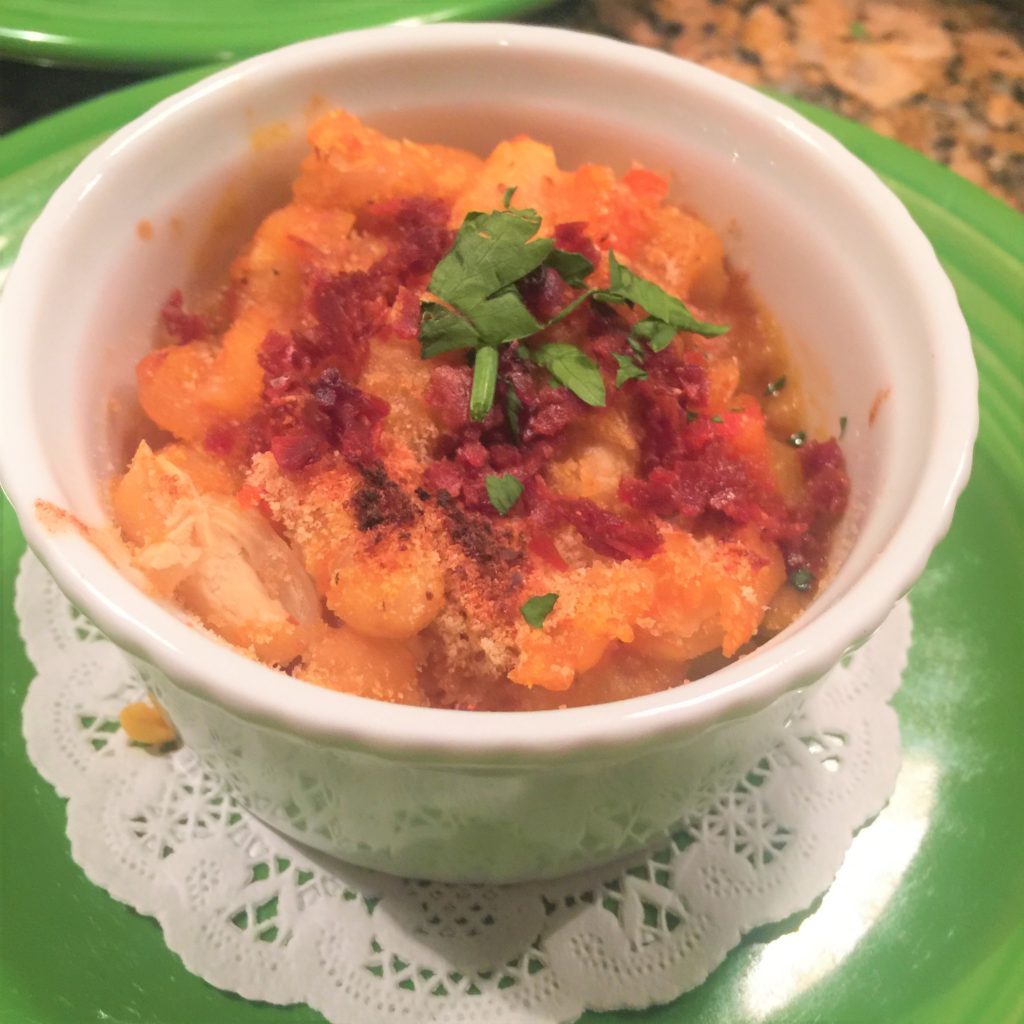
I have made the real-deal cassoulet before, and while it is perfect for the menu here, I was not looking forward to investing a week to putting it together. This is a much lower budget and far less time consuming recipe from my Gerald Hirigoyen “Pintxos” cookbook, and judging from guest comments, it was quite satisfactory.
The key ingredients to make it “cassoulet-tasty” are duck fat (which I happened to have in the freezer), pork belly (again, lucky to have a pound in the freezer), juniper berries (had them from another one of our big dinners), and some Spanish ham (got that for several other recipes). What I did not have was dried cannellini beans which I did finally find at Whole Foods packaged by Bob’s Red Mill. Canned beans just won’t work for this recipe. You have to cook in all of the wonderful flavors of carrots, celery, garlic and fresh tomato.
I cooked up my cassoulet, put it into mini-ramekins for individual service, topped with bread crumbs and the final magic ingredient — HAM DUST! That was actually simple once you know how. Bake and dry extra Serrano ham crisps when prepping for the melon shooters, then take the extra dry ham and run it through the food processor for instant HAM DUST. Pop it under the broiler for about 2 minutes and your guests will be oh so impressed! So it didn’t have confit duck legs and half a dozen other kinds of smoked meats, but that duck fat, pork belly and ham dust really go a long way. And by the way, an old vine Garnacha is perfect with it!
A Tapas Tour of Spanish Rioja Grapes
CVNE (Compañía Vinícola del Norte de España) Rioja MONOPOLE
Clasico Blanco Seco 2015, La Rioja Alta
Viura (Macabeo) blended with 5% Manzanilla Sherry
(94 pts Tim Atkin/92 pts RP) #17 in Vine Pair’s Top 50 of 2018
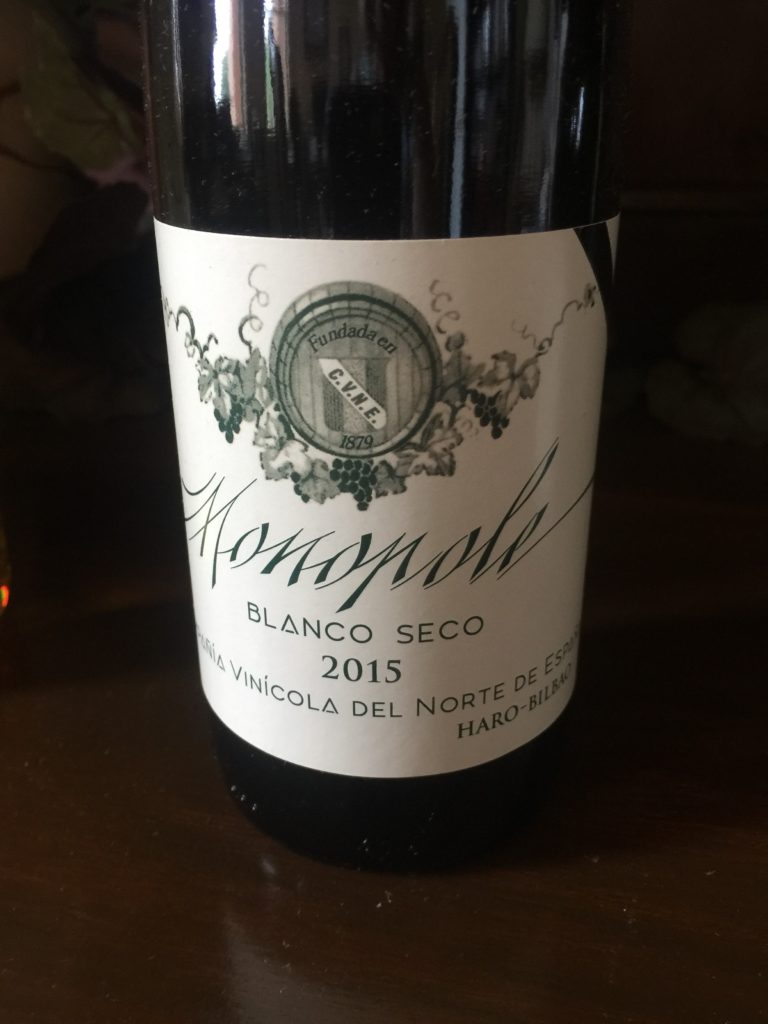
R. López de Heredia Rioja Blanco Viña Gravonia 2009
La Rioja Alta, Calificada Rioja DOC, Spain Viura (Macabeo) (94 JS/94 WS)
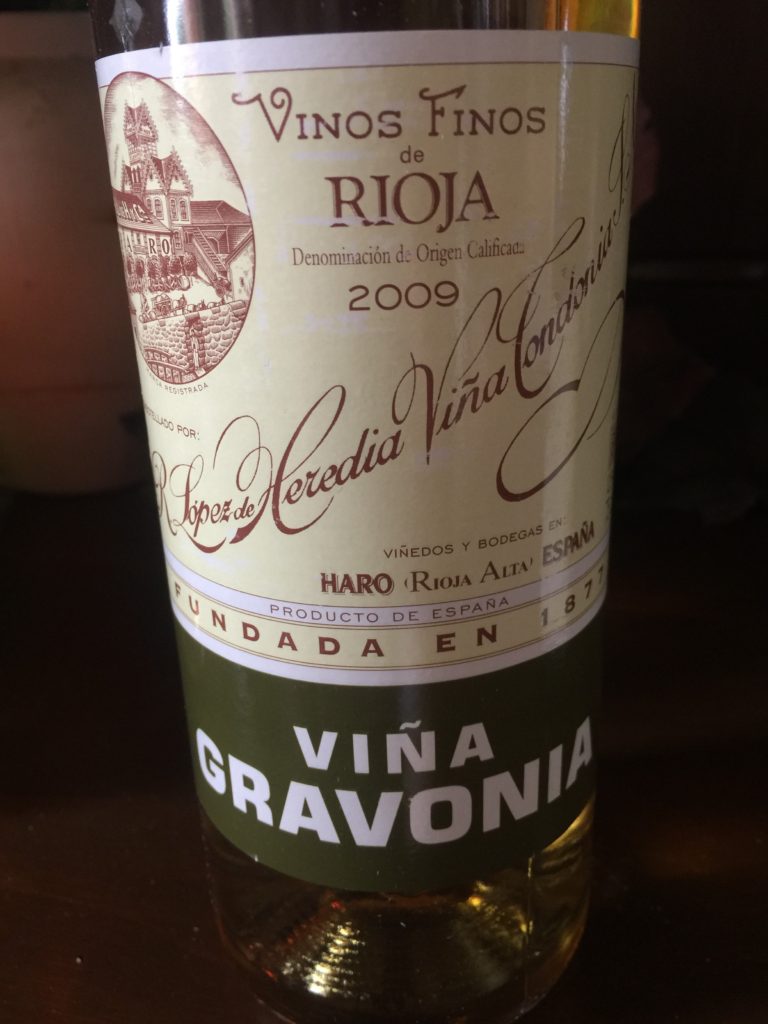
Tuna Steak with an Orange Marmalade Glaze
Here’s another recipe from the “Spanish Cuisine – Modern & Traditional Recipes of Northern Spain” cookbook that couldn’t be more simple while bringing you lots of flavor. I seasoned the tuna steaks in advance and had them all ready for Chef Al to pan sear in a very hot skillet. We cut them into little squares, sat them on a little bed of Spanish sweet potato puree, and then drizzled them with a glaze made of orange marmalade, sherry vinegar and water. Sprinkle on some parsley and sea salt and you have a Spanish tapas plate worthy of the CVNE Monopole and Heredia Vina Gravonia whites that we paired with it.
Bodegas Muga Rioja Flor de Muga Rosé 2017, La Rioja Alta 100% Grenache (94 pts JS/93 pts VM/ 91 RP/90 pts WS)
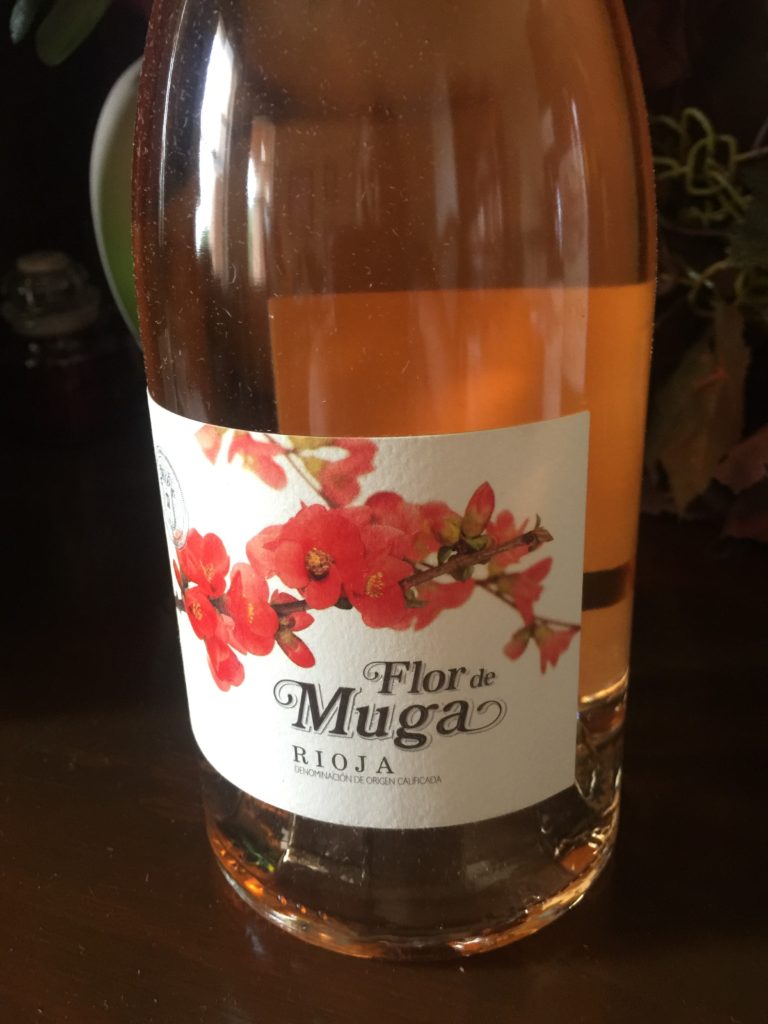
Pimientos y Chorizo Frito – Mini Chorizo Bites with Yellow and Poblano Peppers
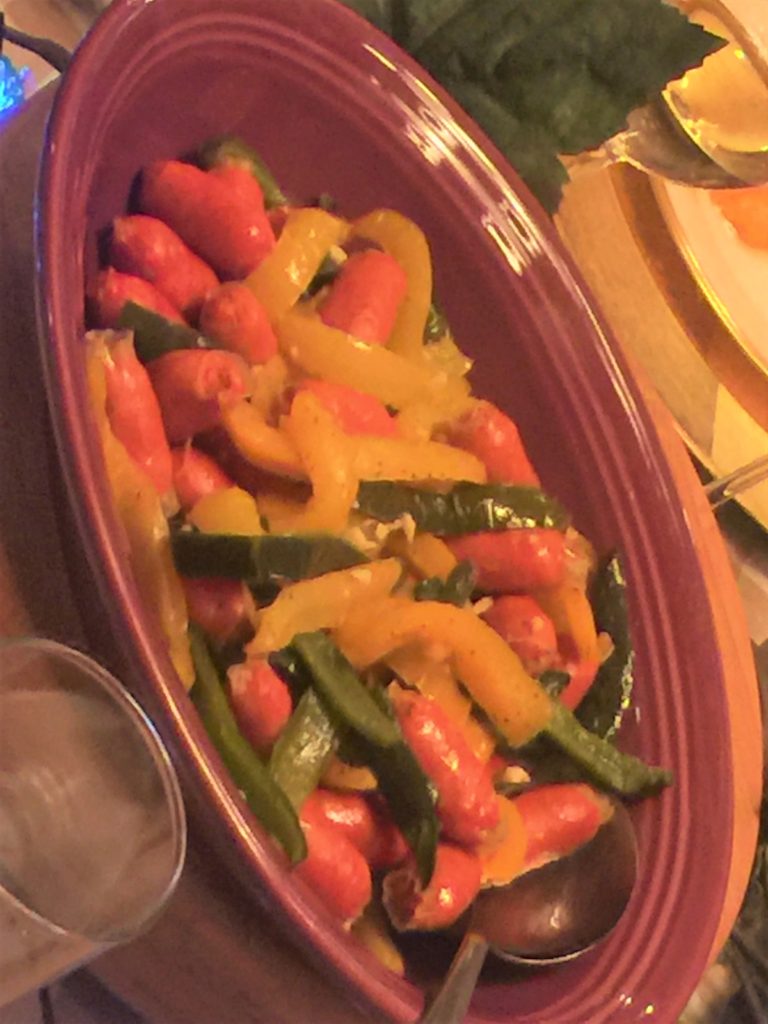
It just wouldn’t seem right to serve up Rioja wines and Tapas without Spanish Chorizo and Peppers. These were perfect little bite-size chorizos purchased from La Tienda that come 40-50 links in a 1 lb package. I had to substitute Poblanos for Anaheim peppers, but when Chuck cooked them up with the yellow pepper and garlic, we knew it was a winner. Even our non-chorizo lovers (that includes me!) liked this dish. And the wine pairing……………..our Muga Flor de Muga rose would have been hard to beat!
CVNE Rioja Gran Reserva 2010, La Rioja Alta
Tempranillo 85%/Graciano 10%/Mazuelo 5%
(94 pts WS/92 pts WE/91 pts RP/ #22 WS Top 100 of 2016)
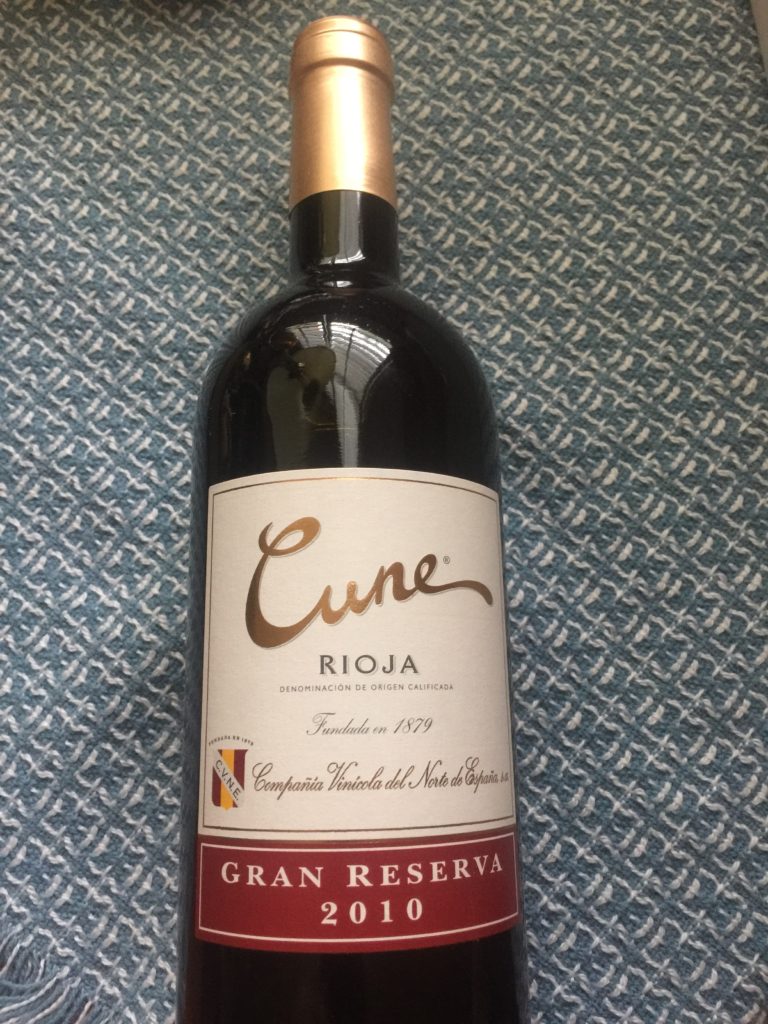
Marqués de Murrieta Rioja Ygay Reserva 2014, Rioja Alta Tempranillo 84%/ Graciano 9%/ Mazuelo 5%/ 2% Garnacha
(94 pts Tim Atkin/93 pts RP/92 pts WS)
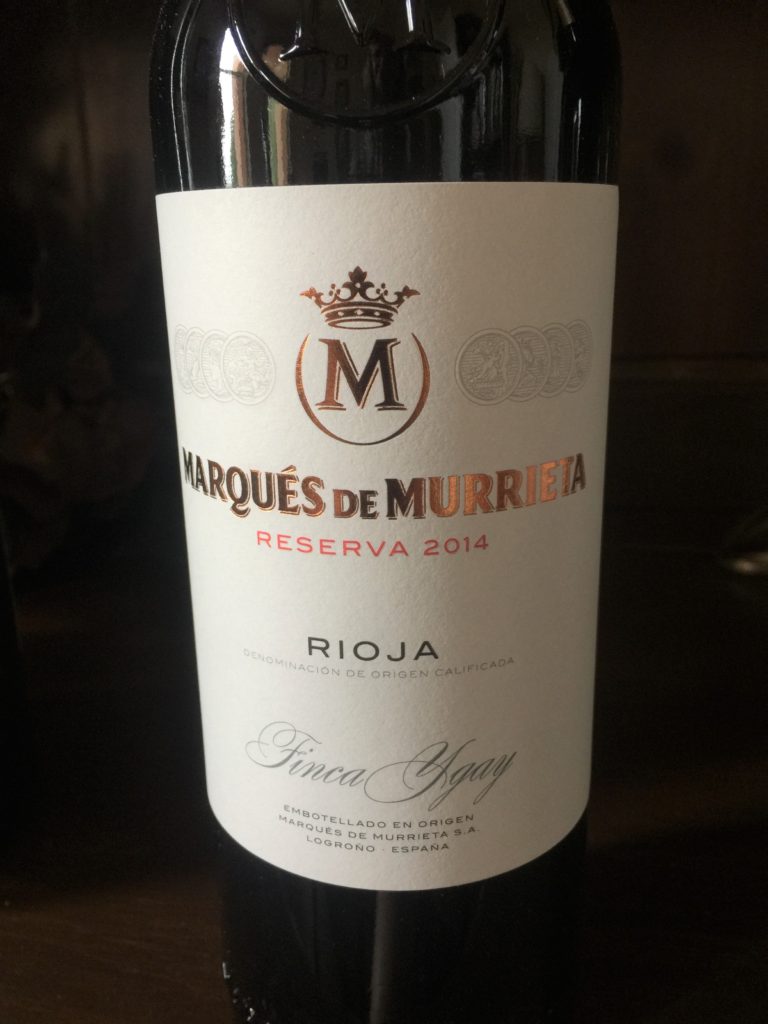
Seared Filet of Beef Tenderloin with Piquillo Pepper Shallot Jam and Garlic Aioli on a Circle of Toasted Whole Wheat and Arugula Lightly Dressed in EVOO
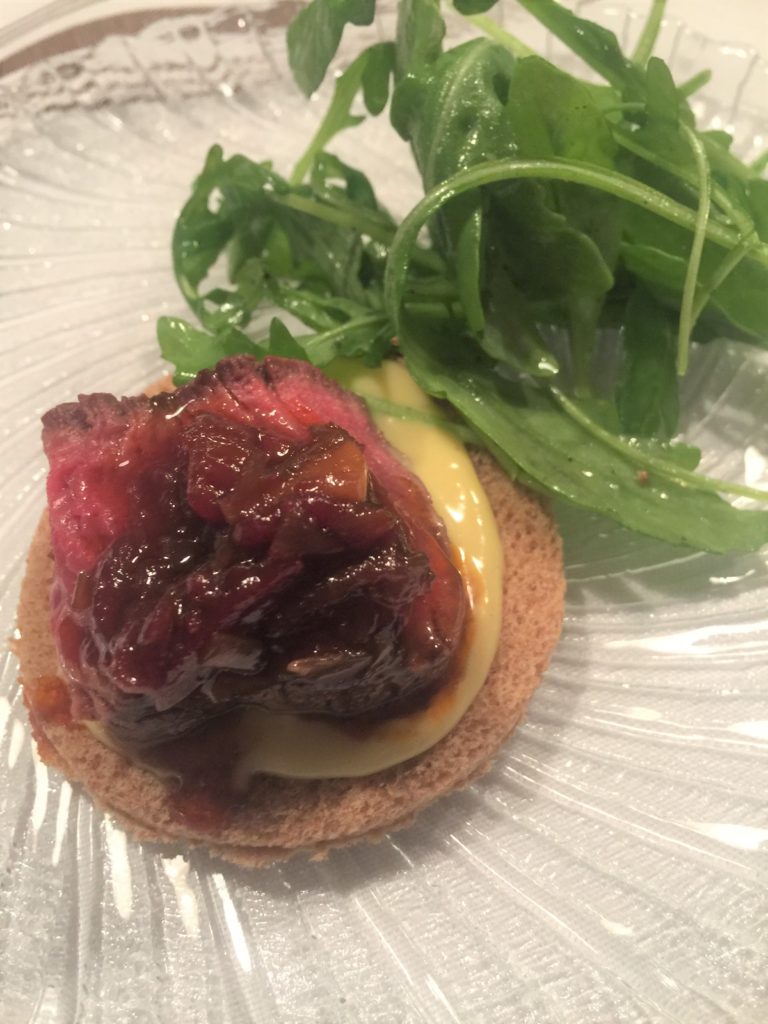
Last but not at all least for our Rioja Tapas, was this fantastic beef tenderloin plate from my well used Gerald Hirigoyen “Pintxos” cookbook. My first task was to make the Piquillo Pepper and Shallot Jam. Wow! That is some tasty stuff. The Pedro Ximenez sherry didn’t hurt the taste any either! And while on a search for a jar of piquillo peppers in advance of my special internet order, there they were all along on a Fresh Market shelf. Piquillo peppers have a delicious sweet taste and NO heat. I now like them so much they will become a pantry staple.
We bought several beef tenderloin fillets which Chuck seasoned well with salt and our usual dose of piment d’Espelette, seared them off on all sides in a very hot skillet until they were rare inside. Let them rest and then slice VERY thinly so you can roll the slices.
The recipe called for more baquette slices, but since I already had several of them going on, I went for the optional whole wheat bread toasted and then cut into 2 1/2 inch rounds.
Service was very simple – Spread each wheat toast round with some of that delicious aioli that I made for the egg, shrimp and quindilla pintxos, add one rolled up beef slice, and top with some piquillo pepper shallot jam. Of course we need some greenery and a bit of baby arugula tossed with a little EVOO was the perfect touch. Our guests said they were “eating healthy”! And the pairing………… oh my goodness how perfect was the CUNE 2010 Rioja Gran Reserva and 2014 Murrieta Rioja Ygay Reserva with this plate. It just doesn’t get much better.
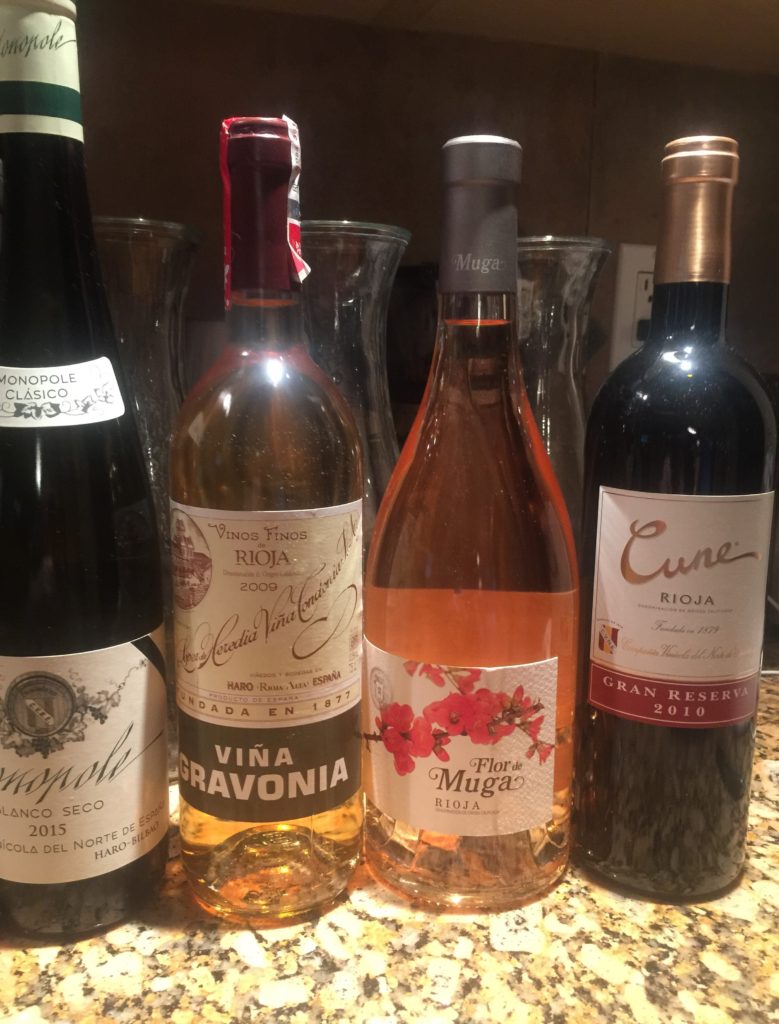
Dulces
Gâteau Basque from Anita’s kitchen
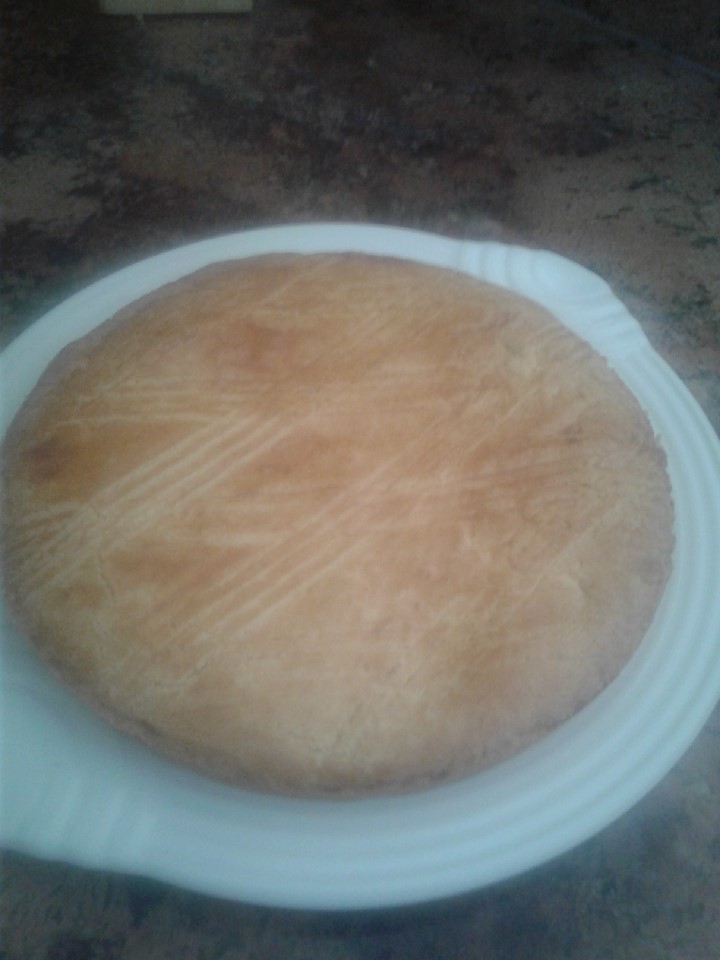
Gâteau Basque is a traditional dessert from the French Northern Basque Region, typically filled with cherry jam or cream filling. The top of the cake should be decorated with a crosshatch pattern or a Basque cross. Anita baked this perfect version with the berry jam inside and the beautiful crosshatch design on the top. We salute Anita and her baking skills!
Spanish Chocolates
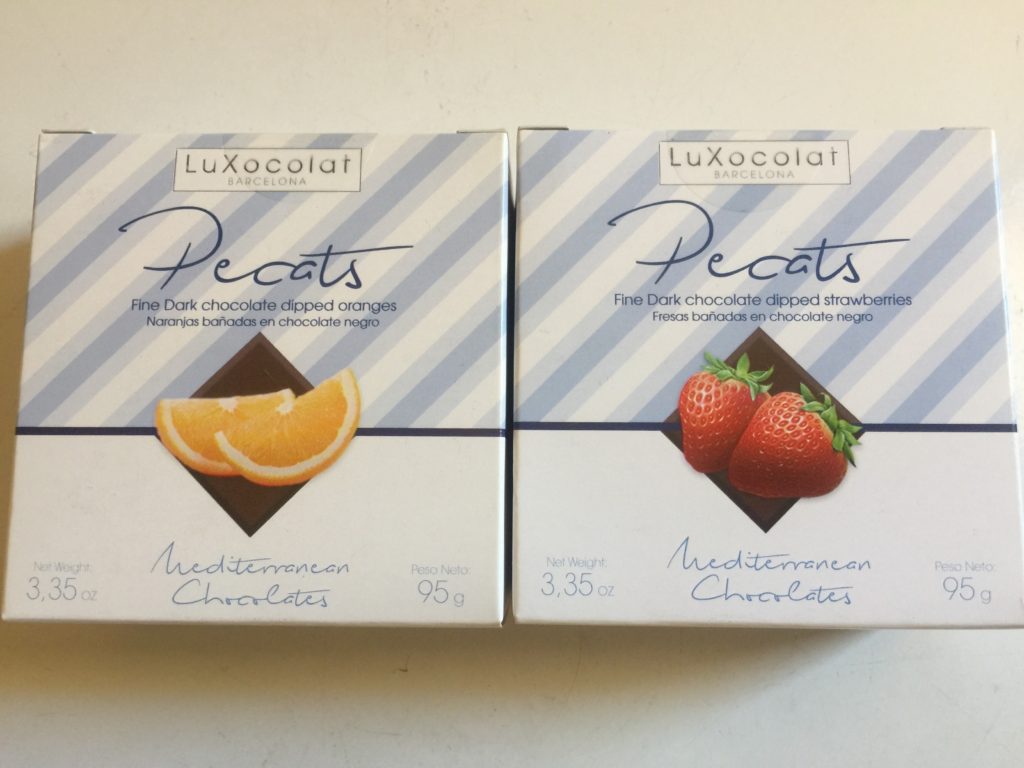
Assorted Marcona Almonds
French and Spanish Cheese Plate: P’tit Basque, Idiazabal, La Peral and Leonora
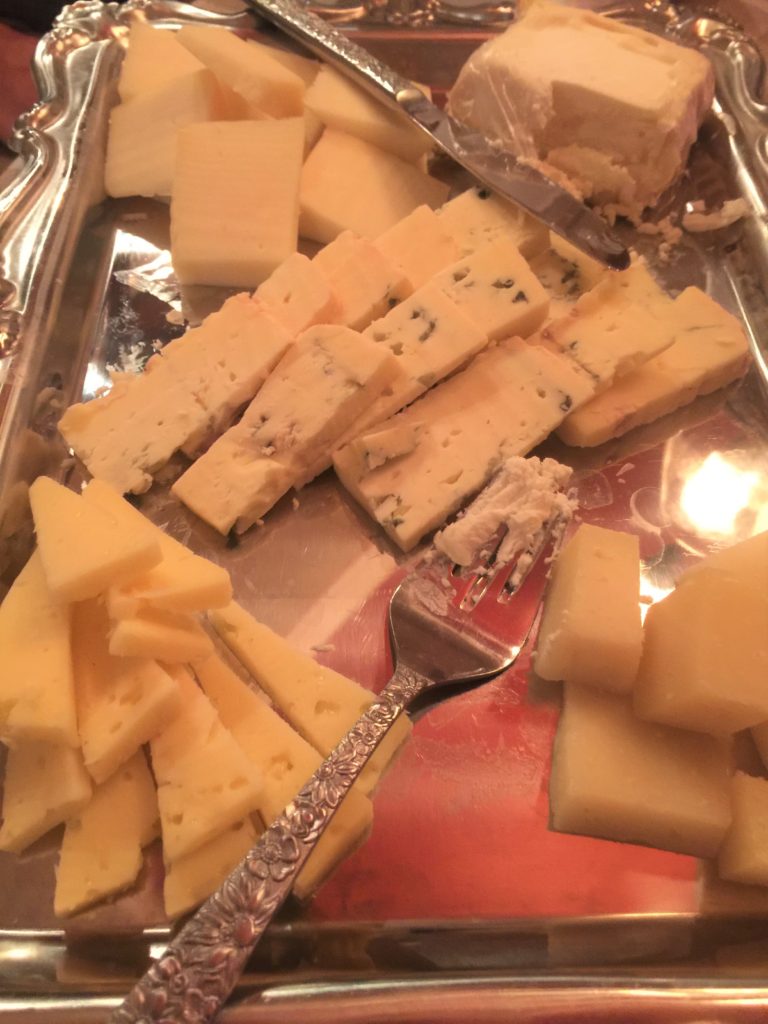
The cheeses were all purchased from iGourmet and were great examples of cheeses from the Basque Country. They are an assortment of goat’s milk, cow’s milk and sheep’s milk cheeses. My new favorite is called Leonora – a goat’s milk cheese from Leon in northwestern Spain. It is a velvety bloomy rind log with a white, slightly flaky paste covered in ash. Wow! If you like a softer cheese and can find this one, I suggest you try it.
Torres Magdala Orange Liqueur Emilio Lustau East India Solera Sherry
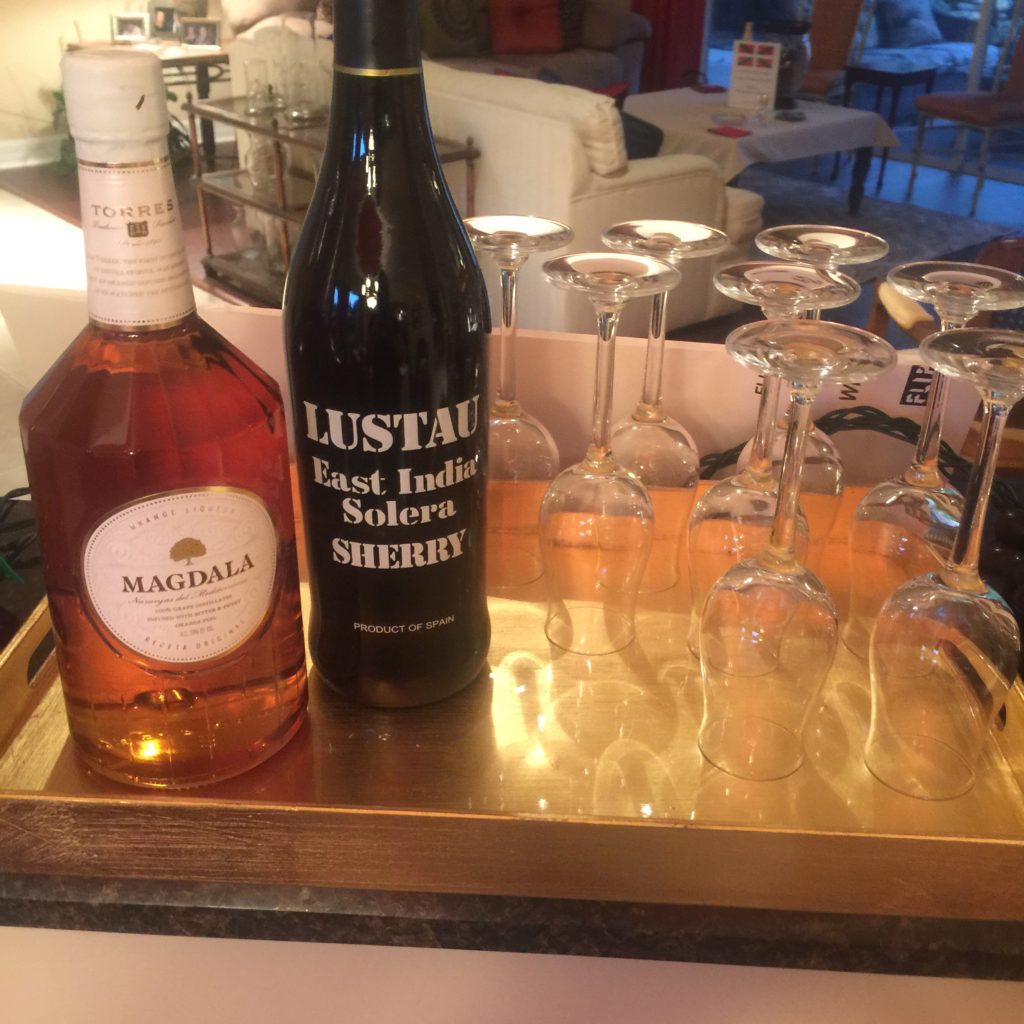
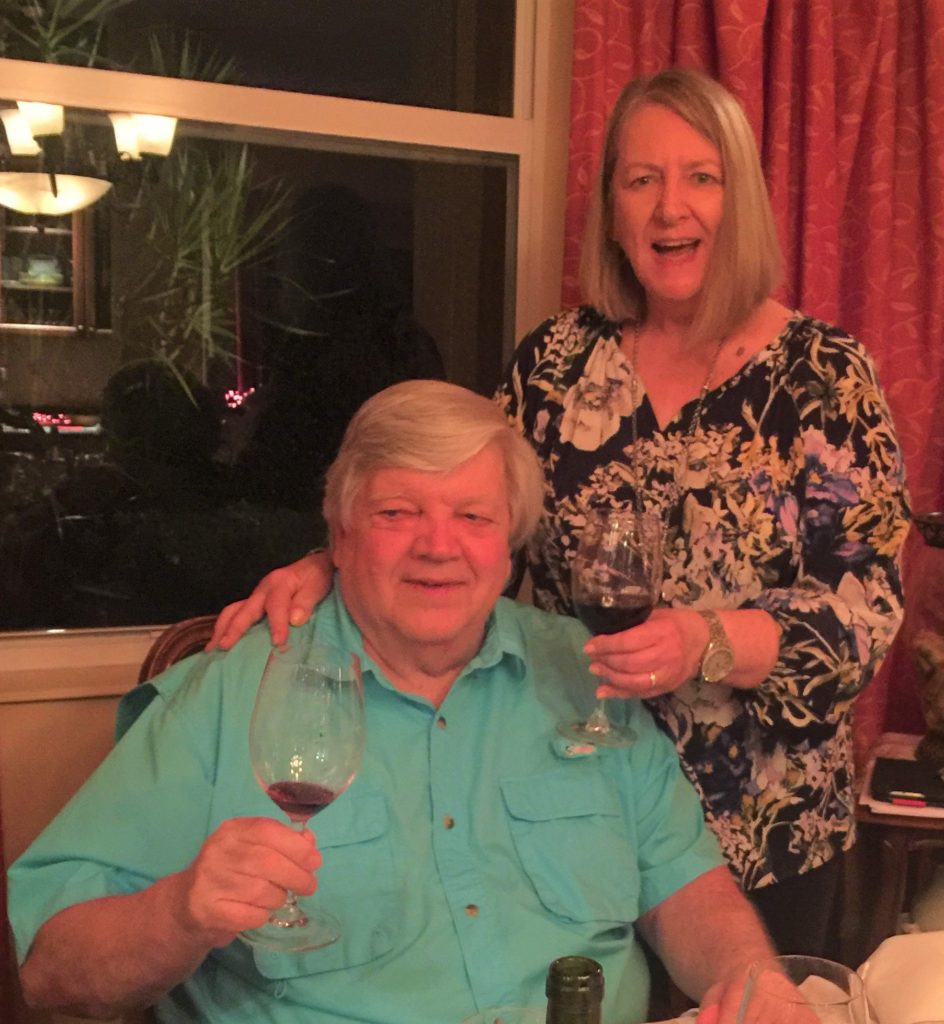
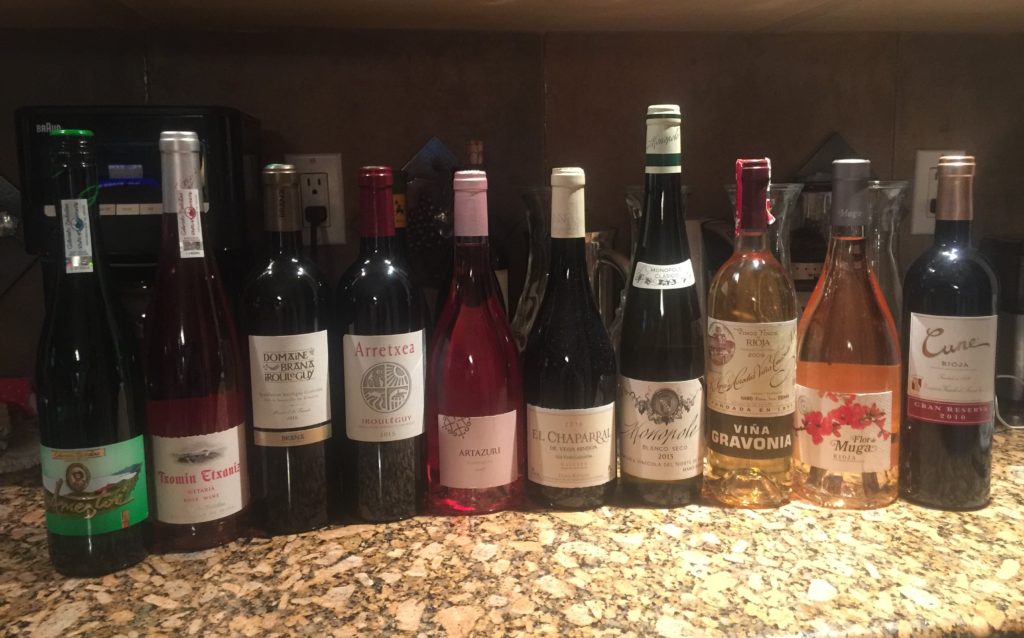
In just over five hours a group of winelover foodies worked our way through a magical evening of 10 pintxos and tapas plus some welcoming small bites and dessert paired with 11 wines all of which highlighted a particular area and/or wine of the Basque Country region of France and Spain. I did my usual work which included all the research and writing of another forkandcorkdivine post about the wine, then waited several months for this to become reality and it finally happened. Once again I fell in love with my wine region. Yes, this area makes excellent wines at particularly good value prices. I suggest you include them in your wine cellar and your weekly routine of wine tasting.
I am always asked where I find these wines that we serve. That is a difficult question to answer except to say that for the most part, unless they were served at a wine dinner we have attended, I am usually searching the internet. I don’t even bother looking at the shelves of my local big box wine store; however I am sure you will find some of them there. My go-to is first of all “wine.com”. Then I go to “wine-searcher” to see if there are any sources listed that may actually ship wine to me as that is the next major issue. I have had luck with “winechateau” and a few others. My natural wine source is Peter Rizzo at The Natural Wine Store in Naples. I also purchase from The Wine Store and Naples Wine Collection both of Naples. It really depends upon the wine region that I am researching and hoping to serve their wines.
Many thanks to everyone who assisted with the research, the dinner and drinking of our Basque wines! I couldn’t make it happen without you. And where to next? I read that Sonoma, California has been selected by Wine Enthusiast magazine Wine Star Awards as the wine region of the year. This makes me extremely happy as we have visited many Sonoma wineries through the years and tasted many of their wines. It is one of my favorite areas of the country making some of my favorite wines. I can’t wait to officially celebrate it in January 2020!
9.26.19 LR forkandcorkdivine.com

